The Definitive Guide to Carnivorous Plants

There aren’t many other types of flora that have captivated the human imagination more than carnivorous plants.
Plants that survive by eating living things seem to violate the laws of nature.
So it’s not surprising that plenty of people cultivate them.
However, they’re not the easiest types of plants to grow, so if you want to master growing them there are a lot of things to learn and misconceptions to overcome.
This guide is aimed at the new player who wants to grow carnivorous plants of their own. While this guide doesn’t teach you everything you need to know, it’s going to get you started and put you on the right path to mastery.
Table of Contents
Chapter 1: What are Carnivorous Plants?
So, for most of us, our ideas of what makes a plant a plant are pretty simple; they’re passive organisms that barely meet the definition of being alive.
Then we learn about carnivorous plants and our conceptions completely change. If you’re mystified about carnivorous plants then you’ll be pleased to hear that you’re in good company.
The father of modern botany, Carl Linnaeus, said:
…to think that plants ate insects would go against the order of nature as willed by God.
Some time later, Charles Darwin called them the most wonderful plants in the world.
So before we look at the ins and outs of carnivory (as enthusiasts say), let’s have a look at our history with them.
Humans & Carnivorous Plants
Carnivorous plants have been around a long time (although we’re not sure exactly how long), but humans have only had a relationship with them for a relatively short period.
It was only during the last few hundred years, when modern botany began, that they were even noticed.
For quite some time, they remained in obscurity; only scholars had any idea of their existence.
This began to change in 1875, after the publishing of Charles Darwin’s Insectivorous Plants. Having already established himself as a rock star of the scientific world, Darwin’s book set alight the imagination of the wider public.
You can download Insectivorous Plants here if you’d like to read the book that started the world’s fascination with carnivorous plants.
Around the same time, a fictional article was written purporting that a German explorer named Carl Liche had discovered a large, man-eating, tree in Madagascar. The article was picked up in numerous newspapers around the world and its notoriety grew quickly.
It was at this point that stories of man-eating plants began to flourish.
In the 1922 film Nosferatu, Dr Van Helsing demonstrates the carnivorous nature of the venus fly trap and describes it as the vampire of the plant kingdom.
In the 1935 movie Werewolf of London, carnivorous plants were shown to be in violation of natural laws.
In the 1955 book, Day of the Triffids, author John Wyndham painted a picture of a world overrun by man-eating plants.
After this, appearances of monstrous carnivorous plants became more frequent in horror movies, with the most well-known example being the Little Shop of Horrors.
It was all these appearances in movies and literature that lead to increased interest in the plants that we still see today.
What Makes a Carnivorous Plant?
In short, a carnivorous plant is one that gets some of its energy from devouring animals. Although pinning it down exactly is a little trickier than you might think.
Originally, it was thought that for a plant to be considered carnivory, it needed to:
- Attract
- Retain
- Kill
- Digest
- Assimilate
The problem with this definition of carnivorous plants is that there are some plants that eat animals but are missing one or more of the above “requirements”.
Barry Rice, author of Growing Carnivorous Plants, considers a plant to be carnivorous as long as:
…prey find their way into a plant’s trap, are killed in its clutches, and subsequently become digested and absorbed into the plant’s tissues.
That’s the definition we’ll be using throughout the rest of this guide.
Why do Carnivorous Plants Exist?
The question many people asked upon learning of carnivorous plants was why they existed in the first place.
After all, most plants get by without having to resort to killing animals, so why would these anomalies appear?
The truth is obvious once you learn it; evolution.
Plants, like all living organisms, require energy to survive. Most plants get all they need from the soil, but there are some environments where the soil is really poor and most plants can’t survive.
This is where carnivorous plants thrive.
Because there aren’t many fossils that we can look at, it’s hard to track the evolution of these plants the way we have with human ancestors, but we can speculate a little as to how these plants came about.
Evolution works in part because of random mutations in the genome. Most plants won’t survive in an environment poor in nutrients, but a plant with a mutation that allows it to absorb the nutrients of dead insects will have an advantage over other plants that don’t.
To get a better grip on how evolution works, you can check out this video by Crash Course:
The Alien Hypothesis
While most people feel certain that evolution is responsible for carnivorous plants, other people aren’t so sure.
Rather than having evolved into carnivorous plants, these people believe that they were brought to Earth from outer space.
Why is this?
The answer isn’t as crazy as you might think…
The reason for this is because many carnivorous plants are found in a small area in the United States called the Carolina Bays.
Despite the name, these geographical oddities aren’t just found in the Carolinas; in fact they’re found all along the eastern seaboard from Georgia to New York.
They’re elliptical depressions that have become home to a wide variety of plant life, including carnivorous ones.
One of the interesting facts about these depressions is that they rotate northwards as you go from Georgia to Virginia.
This has lead some people to believe that they were formed by meteorites and that carnivorous plants arrived on Earth from outer space.
Is there any validity to this claim?
Not really.
While this hypothesis was popular among scientists in the 40s and 50s, it no longer has any support in the scientific community because depressions were analysed and found to not have been made by meteorites at all.
That said, there are still people out there who believe that it was all a government conspiracy, so feel free to make your own mind up.
Problems with Carnivory
When you consider how strange carnivorous plants are, it might make sense that there be some downsides to carnivory.
And there are.
The first is their growth rate. Because they tend to grow in areas with low levels of nutrients, they don’t really have the energy to grow quickly.
This presents a couple of problems; first, it means that the plant requires a stable environment. If the environment changes while the plant is still growing then it can be in trouble.
Second, these plants can take years to flower, which hinders their reproduction rate. These two problems make carnivorous plants a little more fragile than other types of plants that are more robust and reproduce quicker.
This also means that they’re vulnerable if conditions in the environment improves. Some carnivorous plants might be flourishing in a nutrient poor environment, where other plants can’t survive, but if the environment becomes more plant friendly, then the other plants will out compete them for resources.

Long maturation time isn’t the only way that carnivorous plants are hindered in reproduction; pollination is also an issue.
And when you think about how most plants pollinate you’ll realise why:
Carnivorous plants often eat the insects that were trying to help them reproduce.
Fortunately they have evolved a few strategies to limit the impact of their carnivory on pollination.
One strategy is to flower at times when their traps aren’t active.
Another is to ensure that their flowers are as far away from the traps as possible.
The third is to use different lures for pollinators versus prey. For example, an insect that is attracted to bright colours of the flower might not be attracted to the scent of the trap.
Not all plants use these strategies, however, which further highlights how fragile these plants can be in the wild.
That said, the wide distribution of carnivorous plants would lead you to think otherwise.
The Distribution of Carnivorous Plants

Carnivorous plants have shot up all over the globe. They can be found in the north of Russia to the tip of South America.
The only places you won’t find them are places where no plants can survive; such as Antarctica and the various deserts on Earth.
Right now there are about 800 known species of carnivorous plants and you can view a full database of them here:
Chapter 2: Trapping Mechanisms
While carnivorous plants differ from each other in lots of different ways, one thing they all have in common is that they each have a trapping mechanism.
There are five main types of trapping mechanisms in the world of carnivorous plants (and a few other hybrid types that we’re not going to look at), so we’re going to take a look at each of them below.
#1: Pitfall Trap
Of all the traps we’re going to look at, the pitfall trap is by far the simplest; it doesn’t even have any moving parts!
How it works is by attracting prey, then preventing it from leaving the trap by essentially drowning it. If you can imagine falling into a swimming pool you couldn’t get out of, you have the basic idea of how a pitfall trap works.
Let’s have a look at how the trap works in a bit more detail.
The first thing it does is attract the prey; without attraction, the plant is basically praying for prey to come and land on it, so the better the attraction mechanism, the more successful the plant will be.
The pitcher lid is the part of the plant responsible for this. It’s typically bright and sometimes even smells nice to insects. Its shape also provides a landing pad for insects to use to explore the lid.
Unfortunately for the insect, the hairs towards the bottom of the lid point towards the pitcher and can be a bit slippery, meaning one loose step and the insect is on its way into the trap.
The next section contains the most amount of nectar, which really interests hungry insects. It’s also the slipperiest area and the part of the plant where most insects come undone.
The third zone of the pitcher plant is known as the glandular zone. It’s glossy and completely devoid of hairs or anything else that a helpless insect might grasp onto. It also contains glands that secrete digestive fluids.
Any creature that finds itself in zone three is guaranteed to live out its life there (but not for long).
The final zone is where the digestion happens.
#2: Bear Trap
The most famous carnivorous plant of them all, the venus flytrap, is an example of a bear trap. These kinds of traps are well known and understood by the general population since they don’t differ from the kinds of steel traps used to catch bears in the wild.
As with the other kinds of traps, the start by attracting the prey.
Once prey is on its way, hairs on the outside of the trap signal that it’s time to strike and the two lobes of the trap come crashing down on the prey (ok, perhaps that’s a bit dramatic) so that it can begin the digestion process.
#3: Fly-paper Trap
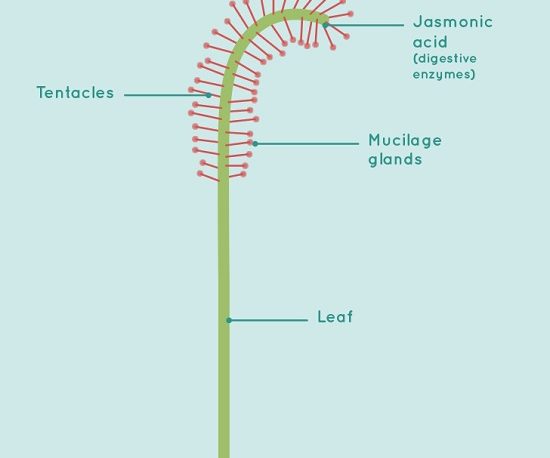
Fly-paper traps are pretty straightforward to understand to anyone who has ever used fly-paper to catch insects of their own.
The ones found in carnivorous plants are basically organic versions of the ones you can find at your local hardware store.
They work by creating a sticky surface that insects cannot free themselves from. Rather than painting themselves with glue, however, most of these traps use hairs that secrete a sticky mucus that does the job.
Some flypapers don’t exhibit movement at all when they catch prey and these types of traps are known as “passive” traps.
Others do exhibit movement when prey is captured and these are known as “active” traps.
#4: Lobster Pot Trap
Lobster pots work by making it hard for prey to exit, either by making the path difficult to find or by putting obstacles in its way.
These traps work by first attracting the prey, usually with some kind of bright, interesting looking opening.
Just like a real-life lobster trap, this type of plant is easy to enter, but very difficult to get out of.
To get a better understanding of how some of these traps work, it might be easier to look at a man-made trap because the examples in plants can often be quite small and hard to see with the naked eye.
#5: Suction Trap
While only one genus of plant uses this trap (Utricularia), they’re actually the most intricate of all the traps featured here.
One difference is that these traps appear underwater rather than above ground.
There are three main parts to this trap:
- A pouch with bulging walls
- An opening
- A valve
When the trap is hungry, it will pump water out of its pouch, which causes the pressure inside to be lower than outside.
It maintains this pressure difference (key to all “suction”, as my old physics professor used to say) by the use of its valve. Without this valve, water would simply re-enter the pouch and keep the pressure static.
As any engineer will attest, keeping something watertight isn’t always the easiest thing to do, so it’s pretty amazing to think that a plant can do it. Most plants achieve this through the use of mucus (think of it as an organic glue).
As usual, the trap starts by attracting its prey, which it does a number of different ways. Some species provide a comfy landing pad for prey while others use chemicals.
Once the prey is at the gates, the trap is triggered and the trap door opens, sucking the creature inside, never to leave again. All of this happens very quickly and digestion begins once the prey is inside the trap.
Chapter 3: How to Grow Carnivorous Plants
If you’ve read this far then you’re probably not just interested in learning some basic facts about carnivorous plants, you probably want to know how to cultivate them yourself.
In this section, we’ll go into detail on how to do just that. Even if you’re a beginner when it comes to gardening, you’ll learn all you need right here.
They aren’t the easiest of plants to grow and their slow growth makes them less than perfect for impatient growers, but they can be rewarding.
Since carnivorous plants grow in all sorts of environments, they all require slightly different care, so it’s important to remember that the governing principle behind all successful propagation is to try and keep your environment as similar to the natural one as possible.
That said there are a few things that tend to be similar when cultivating carnivorous plants in general, so we can take a look at these before looking at how to grow specific types of plants.
Let’s take a look at the first thing to take care of when you’re growing carnivorous plants; the soil.
The Best Soil for Carnivorous Plants
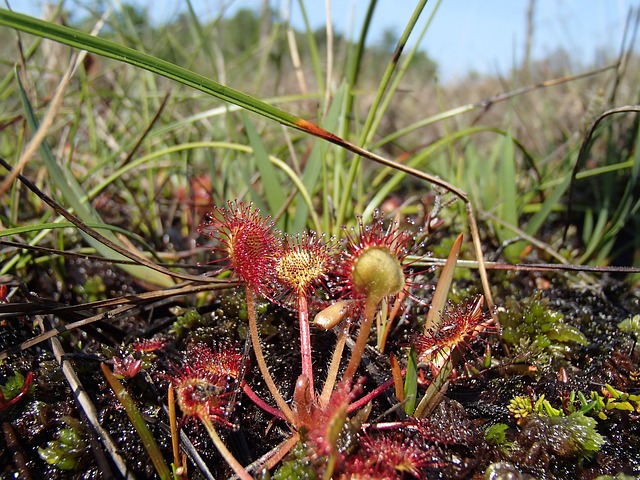
Carnivorous plants tend to be found in areas where the soil nutrients are quite poor, so when trying to reproduce these conditions yourself, you’ll find yourself using media that are quite light.
Some people like bark, others like charcoal.
Peat moss is another popular choice because it’s poor in nutrients but has good draining properties. It’s also easy to find.
Perlite and gravel are two more types of media that you can use.
Others even prefer to use sand. If you choose to use sand yourself, make sure that you choose horticultural sand, since other types can contain impurities that can hurt your plant.
When it comes to the material you plant your plant in, it’s more about not doing anything wrong rather than choosing the absolute best one, since soil quality isn’t as important to these types of plants as it is for others (hence why they eat things to survive).
Light Requirements for Carnivorous Plants

All plants require light for photosynthesis. The difference with carnivorous plants is that their leaves are often used to attract and digest prey rather than to process sunlight. And because they require a lot of energy to create the digestive enzymes, they also require a lot of sun.
Barry Rice, a leading carnivorous plant expert, says:
Stress because of inadequate sunlight is the single factor that results in the largest number of deaths of carnivorous plants in the hands of novice growers.
In their natural environments, these plants tend to get a lot of sun; perhaps 16 hours of “full-sun” a day.
To replicate these conditions indoors you’ll need to use a little bit of modern technology because even if your house is bright it probably won’t be enough.
Fortunately, a number of hardcore carnivorous plant growers have already figured out systems for supplying their plants with the most amount of light possible, while keeping costs low.
After all, the last thing you want is for your house to look like a marijuana grow house.
For a while, it was thought that fluorescent lighting was the best way to go, but LED technology has made it a less than optimal choice nowadays.

If you want to learn more about light requirements in general or if you have existing fluorescent lights that you want to use efficiently, then the International Carnivorous Plants Society has a great guide for you:
LED lighting is the most popular method for supplying your plants with sufficient light in 2019. These types of systems tend to be much more efficient than fluorescent systems and they have the added benefit of being a lot cooler so you don’t risk burning your plants.
If you’re growing them indoors so you can appreciate them, then you’ll want to use white light so that you can actually see them. Plants will grow fine under different colour light, but they will look different, so it’s probably not something you want to use.
If you want to have an in-depth look at what sort of LED light system to use, again the International Carnivorous Plant Society has a guide for you:
Another good resource that goes into the technical side of things a bit more than we have is a three-part guide from Curious Plant:
How to Water your Carnivorous Plants
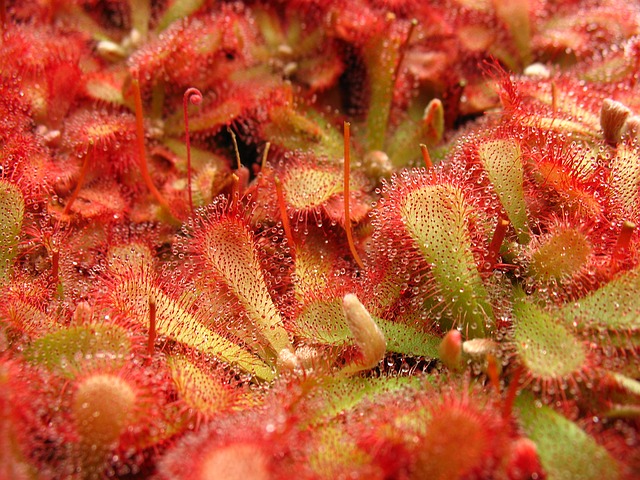
As with all other plants, carnivorous plants require water, but you could say that these guys are a little fussier when it comes to what sort of water they drink; just like someone who only drinks Pellegrino water, carnivorous plants like water with as few impurities as possible.
Depending on where you live, this can make watering your plants tricky.
If you’re in a city famous for its clear and clean water (such as Melbourne), then tap water will probably be fine.
But if your tap water needs to be chewed before you can swallow it (not naming names), then you’ll need to find another solution.
Distilled water or water created by reverse osmosis is probably your best bet.
Once you have a water source figured out, you’ll need to figure out a plan for when to water and how much water to deliver to your plants.
Watering from above is generally not a good idea; not only can it result in rot, but water droplets on the leaves of the plant can cause scorching, which can harm the plant (it’s like sun burn for plants).
What most growers do is place their pot in a plastic saucer that’s slightly larger than the pot the plant lives in. This saucer should be full of water throughout the growing season so that the plant is never too thirsty.
There are other systems in place, but this one works and is quite simple to setup.
How much Humidity is right for Carnivorous Plants?
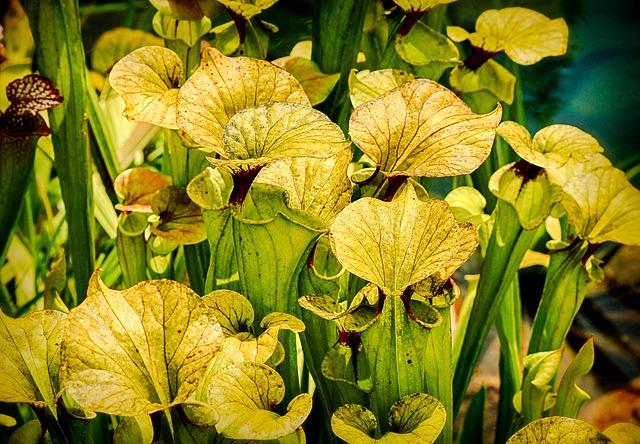
As with everything, you need a balance between really low and really high humidity if you’re going to keep your plants in tip-top shape.
If the air is too dry, then your plants will suffer; the same can be said if the humidity is too high as well.
You should endeavour to keep humidity above 30% and preferably around 50-70%. If you live in an area that’s outside this range then you’ll need to make arrangements to change things.
Feeding & Fertilizing your Carnivorous Plants
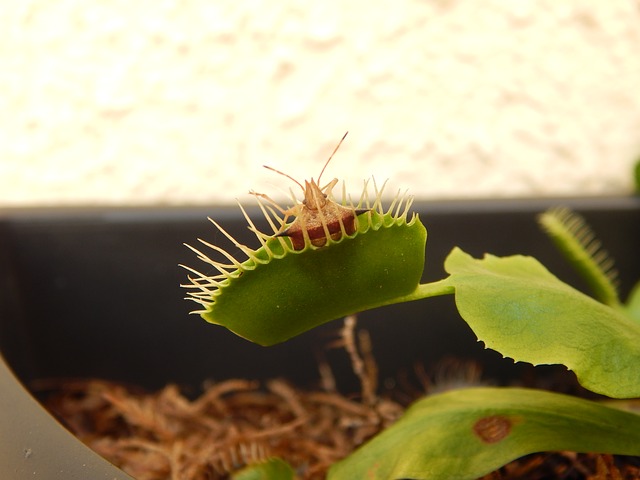
When people think about feeding carnivorous plants, the first thing that comes to mind is meat. After all, most humans are carnivores and we survive on things like beef, chicken and pork.
Why would carnivorous plants be any different?
Well, they are.
Do not make the mistake of feeding your plants chunks of meat, regardless of how small they are.
Instead, focus on feeding your plants insects. Ants, beetles, caterpillars, just about anything that crawls will do. Some people like to order bloodworms over the internet and use them to feed their plants, while other people prefer to wander around their garden looking for potential plant snacks.
Whatever you do is fine, as long as you’re sticking to the right diet and you’re not overfeeding your plant.
Because you’re feeding your plants directly, you generally don’t need to worry about fertiliser; in fact, using fertiliser is one way to ruin your plant.
Only worry about using fertiliser if you’re an advanced grower of carnivorous plants.
What containers are best?

Because soil conditions aren’t the most important factor for carnivorous plants, the container you used is generally not going to be a problem.
That said, there are a few things to look out for.
First, plastic is the most common material. It’s cheap, easy to sterilise and it’s a lot more robust than clay pots.
Second, make sure that it drains well. Overwatering and keeping the soil too wet can be just as harmful as not watering your plants.
If you can follow the above advice then you’ll be well on your way to cultivating healthy carnivorous plants.
Common Pests & Diseases
Unfortunately, despite eating many of the pests that hurt other plants, carnivorous plants are still vulnerable to several diseases and critters.
Some common ones include the following:
- Ants
- Aphids
- Botrytis
- Mites
- Scale
- Snails & slugs
Chapter 4: Various Genera of Carnivorous Plants
There are lots of different species of carnivorous plants and while the above cultivation guidelines are useful, each genus likes things a little differently.
In this section, you’ll learn about the 13 most popular genera in the world of carnivorous plants.
Genus Aldrovanda
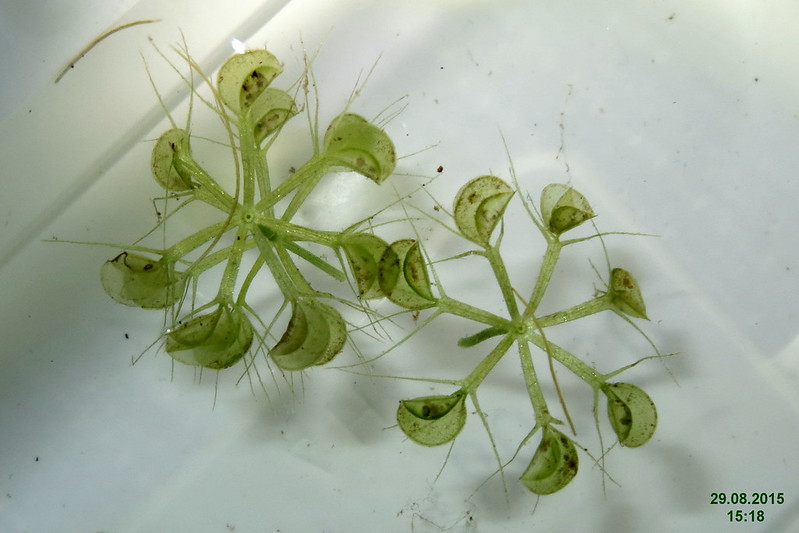
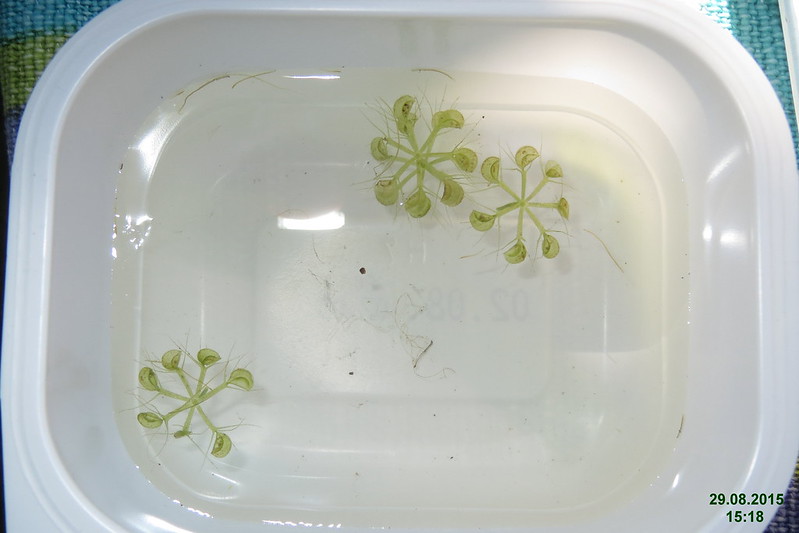
Aldrovanda, commonly known as the “waterwheel” plant, is a rootless carnivorous plant that lives in the water and is closely related to the venus flytrap. It’s for this reason that many people think of Aldrovandra as the water based version of the venus flytrap, but this isn’t entirely accurate for reasons you’ll soon learn about.
It floats along the water parallel and just below the surface. They’re not large, with diameters being typically 5-10cm, so if you’re not looking carefully they’re easy to miss.
While this genus was first named in the 18th century, it wasn’t until a hundred years later that Charles Darwin realised that this plant was actually carnivorous.
In 1968, modern experiments with radioactive prey were conducted that confirmed that it was indeed carnivorous.
Where they can be Found
One interesting fact about this genus is that it consists of only one species.
Why is this fascinating?
Well, it just so happens that this genus is found all across the world; from Africa, Asia, Europe and even far away and isolated Australia.
That said, it’s not as if this plant is found everywhere on these continents; the range it can be found in is gradually shrinking and some conservationists worry that Aldrovandra is in danger of disappearing altogether in the near future.
Nor is it found in a wide variety of environments; you’ll only find this genus in shallow wetlands.
Plant Mechanics
As with all carnivorous plants, it’s the trapping mechanisms that people find interesting, so let’s take a look at how Aldrovandra functions.
At its core, it operates like a water-borne bear trap.
Each trap consists of two lobes about 5mm long, each with lots of tiny hairs that aren’t even a millimetre long.
When these hairs are touched, the trap snaps shut quickly; in less than half a second!
Prey for this genus of plant typically consists of plankton and mosquito larvae.
Once the prey is trapped, digestion begins soon after. Exactly how digestion works is currently unknown to science, but it’s thought that digestion takes several days.
Cultivation Guidelines
Cultivating Aldrovandra has been long considered one of the great challenges in carnivorous plant circles, according to Barry Rice.
The main reason for this is that it lives in water, so the chemical state of its environment is very important and hard to regulate yourself.
There are people who have had success with growing them, such as Lubomir Adamec. He has created the Adamec protocol that can be used to grow Aldovandra. It’s beyond the scope of this guide, but you can find more information on it in Growing Carnivorous Plants by Barry Rice.
Genus Byblis
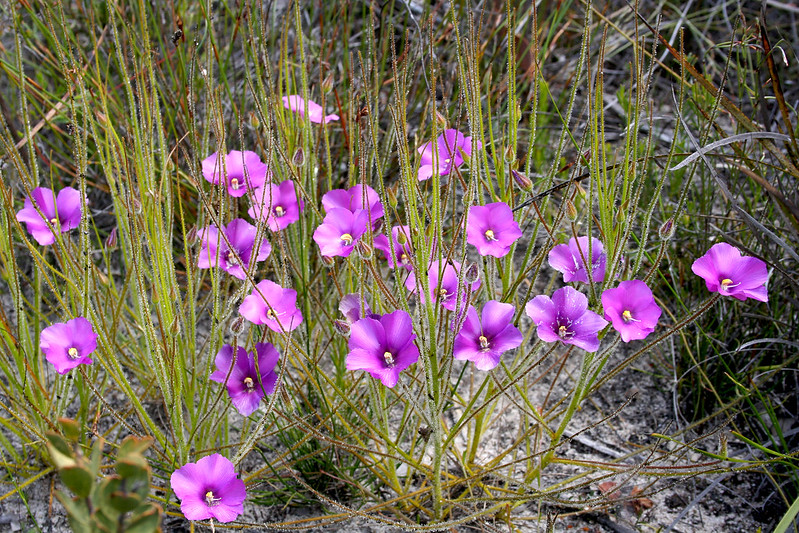
The Byblis genus, more commonly known as the Rainbow Plant due to how it shimmers in the sunlight, consists of several species of carnivorous plants.
There’s quite a lot of size difference between the various species. The smaller ones tend to grow about 15cm tall, while the larger ones can be found growing at about 60cm in height.
This genus is popular with growers because they’re typically easy to grow (especially compared with the previous Aldovandra) and because they also produce lots of pretty flowers.
Where they can be Found
The plants of this genus can be found at home in tropical northern Australia, particularly the Northern Territory and the northern end of Western Australia.
Plant Mechanics
The trapping mechanism is also simple compared to most others; the plant is covered in small, sticky mucus glands that cause prey to stick to it. The prey is killed either from exhaustion, or from being smothered by the mucus.
Cultivation Guidelines
This genus of plant is one of the easier ones to grow; so if you’re a beginner in the world of carnivorous plant cultivation, then this could be the place to start for you.
They have the added benefit of being quite pretty too!
Because they’re native to northern Australia, they prefer warm and humid environments. That said, because they’re easy to grow, you can probably do well with them just about anywhere that isn’t too cold.
Nor do you need to worry about a specific feeding schedule; they tend to attract small insects well enough that you can just sit back and relax.
Pictures
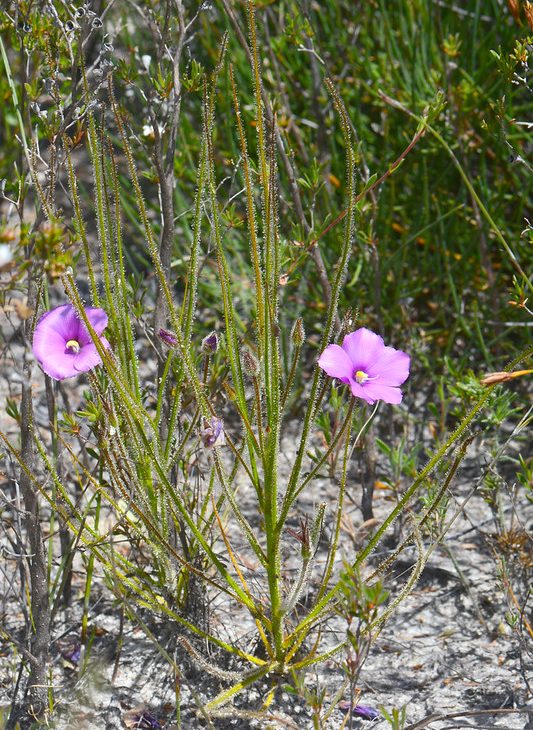
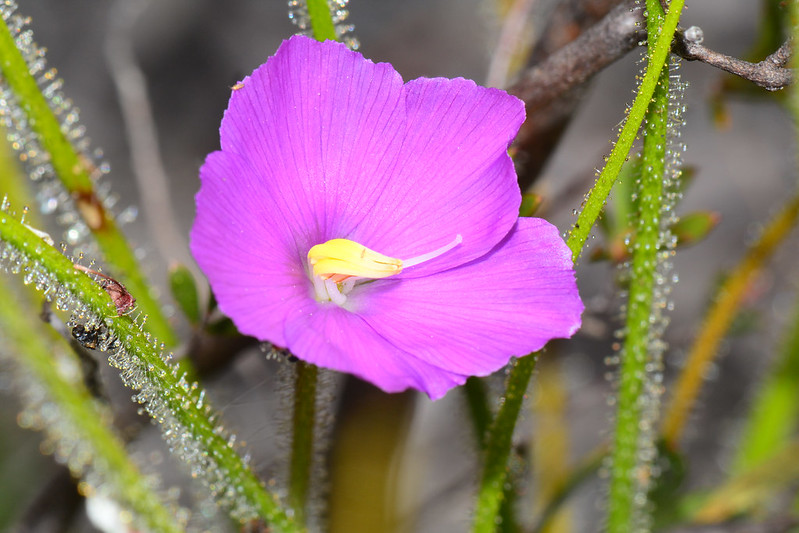
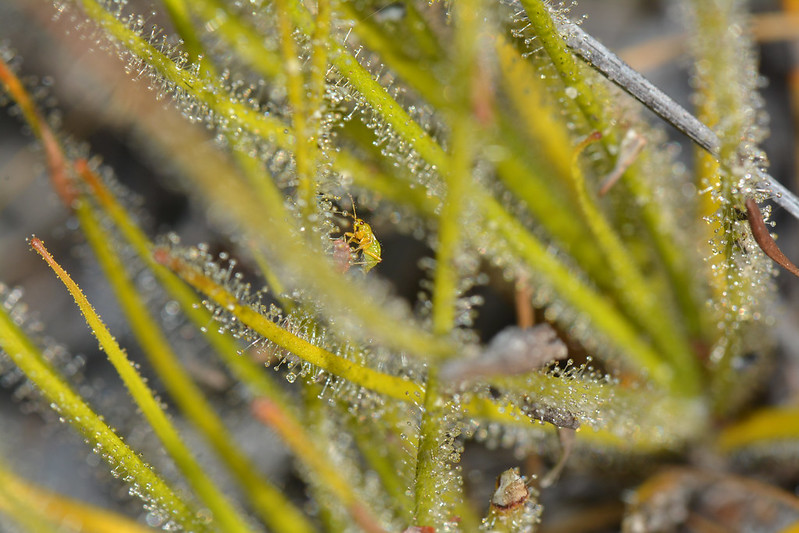
Genus Cephalotus
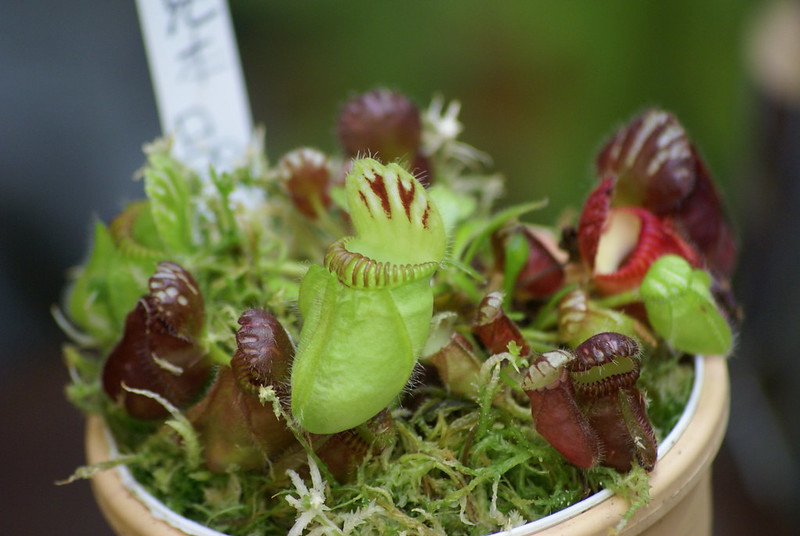
Commonly known as the Albany Pitcher plant, it might not surprise you that this genus of carnivorous plant is native to Australia; Western Australia to be specific.
It was first discovered in 1802 by Robert Brown who quickly realised that what he was looking at was a carnivorous plant.
It’s unique in that it creates two types of leaves; foliage and pitchers.
Where they can be Found
This plant wasn’t named for nothing; they can typically found in their native environment in the south-west region of Western Australia (near Albany).
Plant Mechanics
Cephalotus operates like most typical pitcher plants. It has nectar glands on the outside of the pitcher which act to attract potential prey.
Once prey enters the plant, it finds it hard to leave because of the slippery nature of the walls, so they end up being digested.
Cultivation Guidelines
This genus can be a little tricky to cultivate yourself. Barry Rice claims that it’s one of the most unpredictable types of plant to deal with; sometimes one protocol works very well, but for someone else is fails completely.
That said, there are a few guidelines you can follow that will heighten your chances.
Being from Western Australia, this genus prefers high humidity, can tolerate just about all temperatures except for extreme heat and loves lots of sun.
From time to time you might need to help ensure that this plant is getting all the nutrition it needs, so feeding it something along the lines of bloodworms can do the trick.
Pictures

Genus Darlingtonia
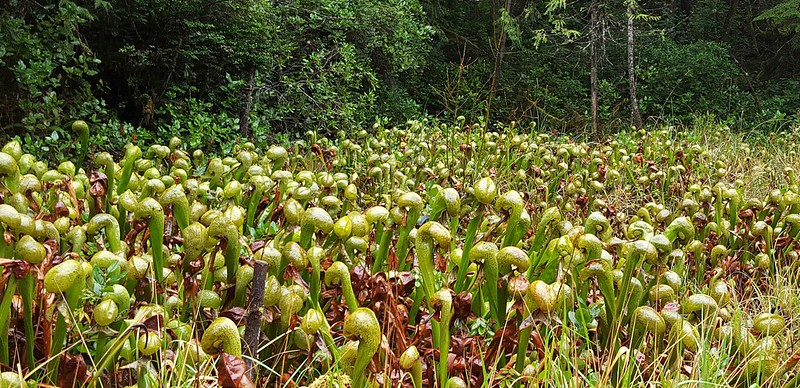
Darlingtonia was first found in California in 1841 and is commonly known as the Cobra Lily.
Of all carnivorous plants, perhaps Darlingtonia gives off the strongest feeling of it being alive. Just looking at it gives you the sense that it’s about to turn around and stare you down.
It’s another genus with only one species and is closely related to Sarracenia.
Every year these plants produce a single flower from which it hopes to spread its seed. It’s currently unknown which pollinator is responsible for spreading pollen around, but Barry Rice has a hypothesis that the original winged pollinators have gone extinct and that a spider has filled the gap by chance.
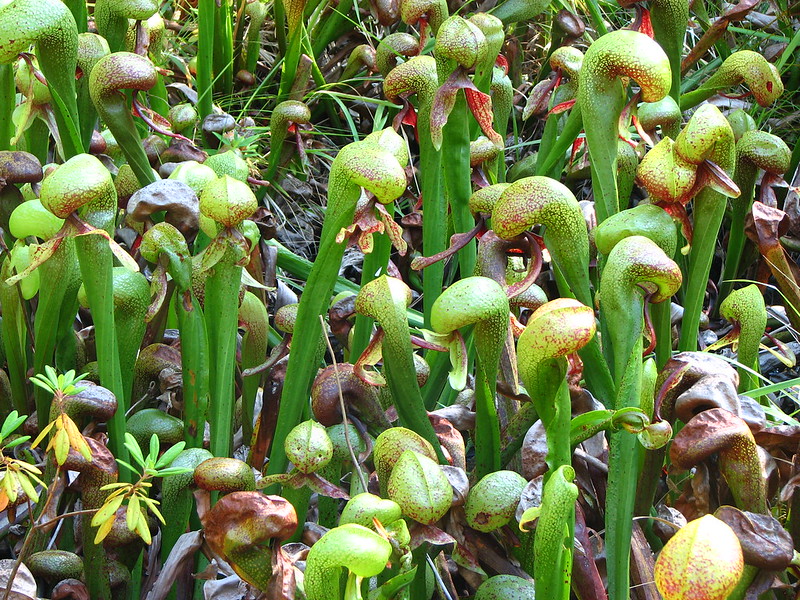
Where they can be Found
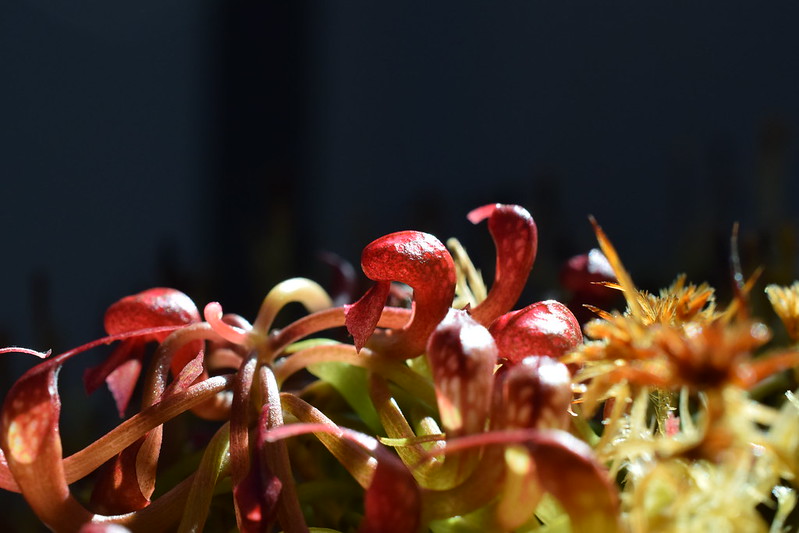
Darlingtonia exists in northern California, around the coastal regions.
Plant Mechanics
Darlingtonia is a bit sneaky when it comes to attracting prey; they have managed to evolve leaves that mimic flowers so that potential prey thinks they’re going in for a regular snack.
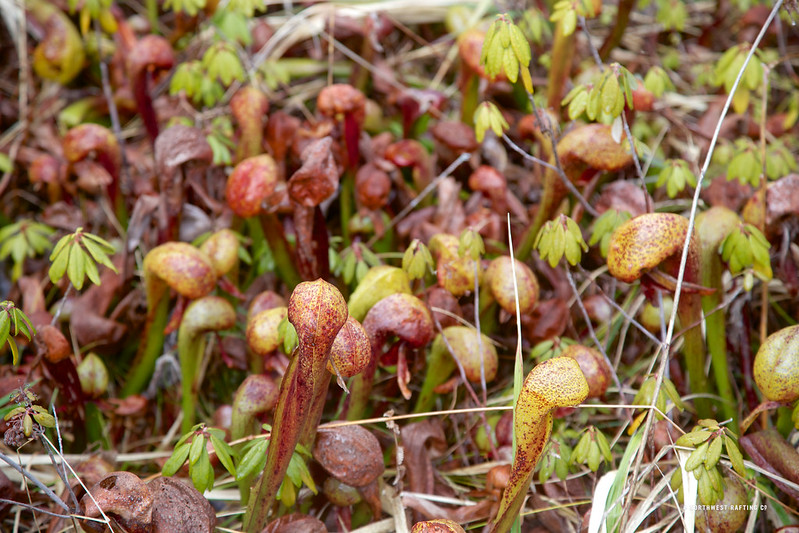
It’s also not a coincidence that these attractants are strongest around the “fangs” of the plant; which conveniently lead straight into the mouth of the trap. The fangs also serve as a convenient landing pad for flying insects.
Once prey enters the pitcher it rarely exits. Exits are hard to find and it’s much more likely that prey will fall into the pitcher and drown in the digestive fluids.
Cultivation Guidelines
Unlike a lot of the other genera in this guide, Darlingtonia actually prefer colder climates. This is good news if you’re in Tasmania, but if you’re in one of the other states that get warmer in summer then you’ll want to make sure that your plants never get too hot.
Pictures
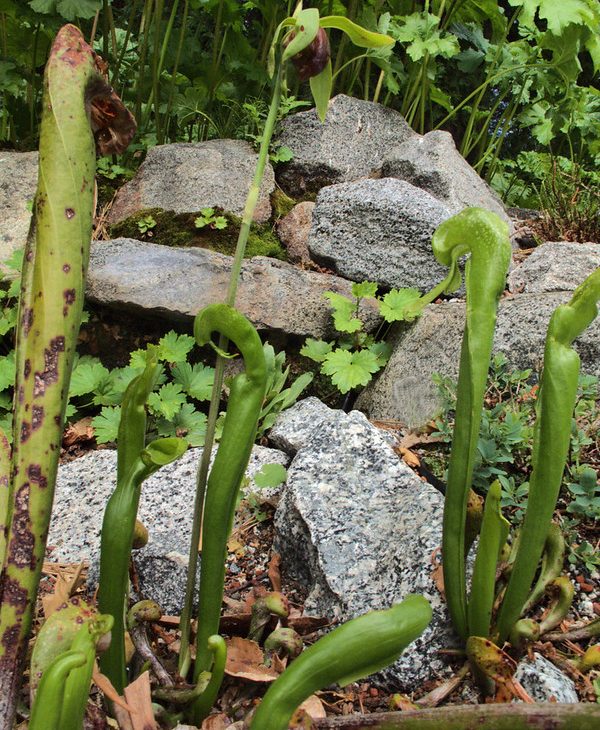
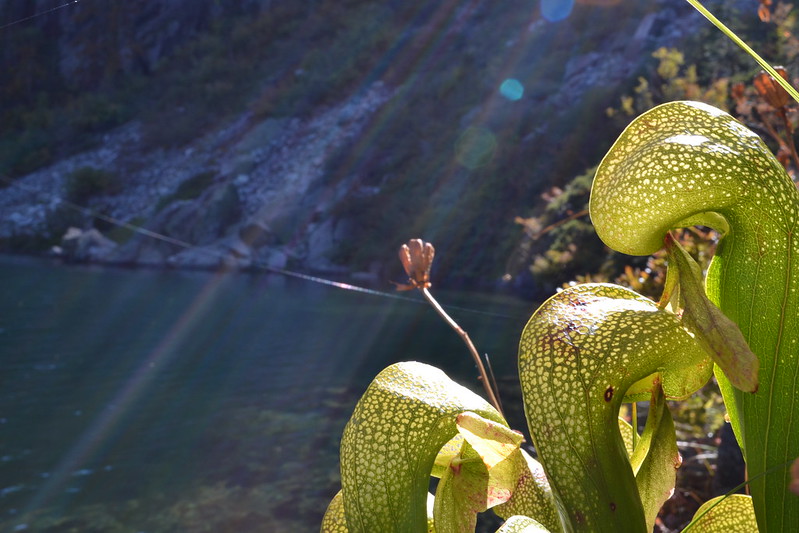
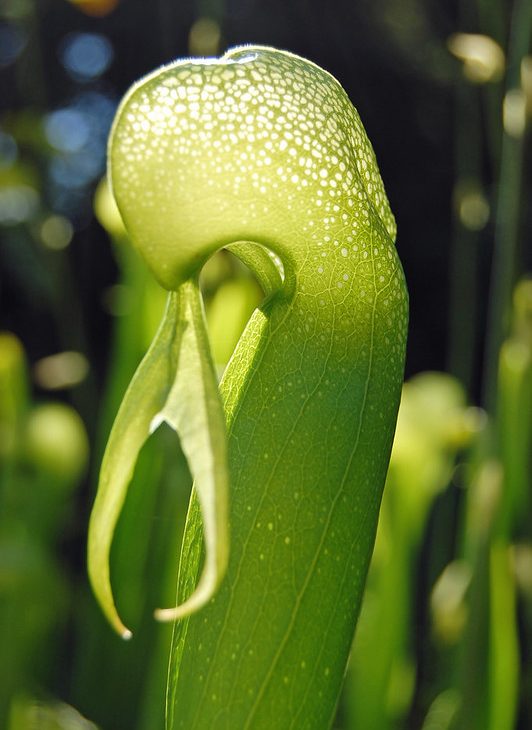
Genus Dionaea
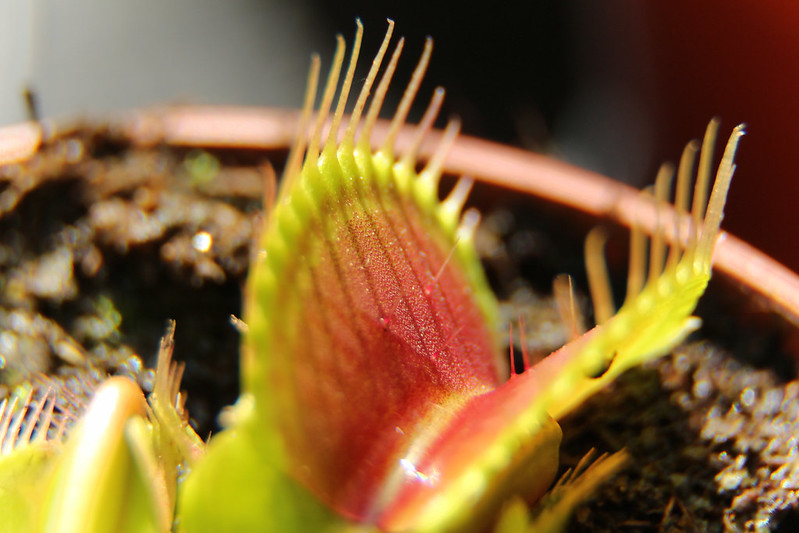
There’s no other carnivorous plant that’s as widely known as Dionaea; commonly known as the venus flytrap.
That said, it was a while before people realised that it was carnivorous; for a long time it was simply thought that it was an interesting looking plant.
In 1870 it was shown experimentally that leaves on the plant cause an electrical signal to be generated that help shut the trap.
As with some other genera, Dionaea muscipula is the only species in this genus.
Once a year, the plant will grow a flower that sits above 30cm above the rest of the plant, probably as a strategy against eating its pollinators.
Where they can be Found
Dionaea are found natively in the Carolinas, particularly in the wetland regions.
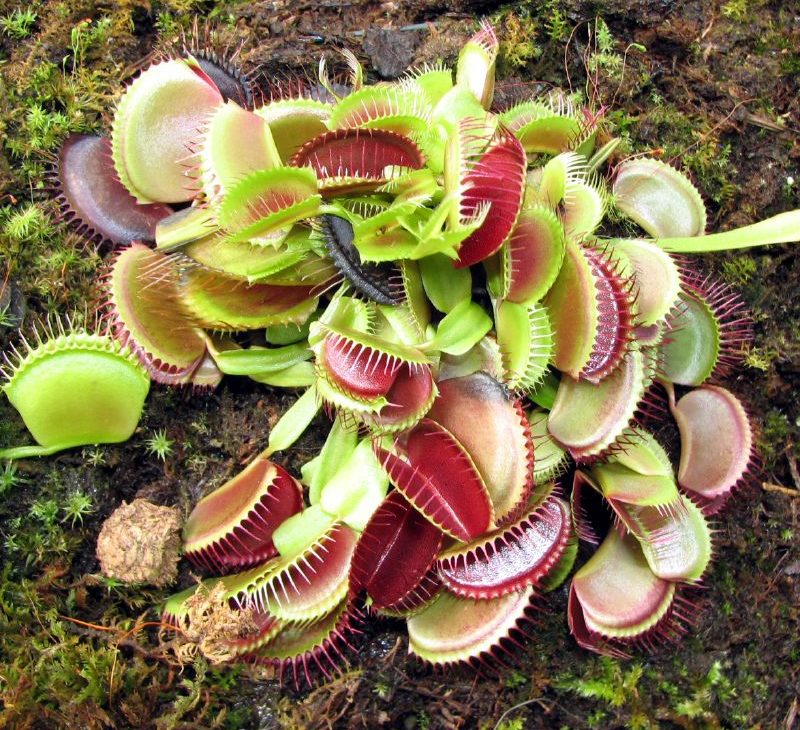
Plant Mechanics
The venus flytrap attracts prey in a couple of different ways; not only are the leaves colourful, but they also emit nectar which lures prey in.
When prey enters the trap to get some of this nectar, they trigger the hairs that are on the lobes of the trap, which trigger the trap.
The plant has a clever system where two separate triggers are required to close the trap; this prevents the trap from wasting energy closing on things like raindrops.
Once the lobes close, digestive fluids are released and the prey suffocates and is digested by the plant.
Cultivation Guidelines
As popular as this genus is, it’s unfortunately not the easiest to grow. To cultivate the plant successfully you’ll need to copy the environment of the Carolinas quite closely, which can be tricky depending on where you live.
Full sun is one requirement; plants that receive less than this often fail to survive.
Humidity requirements aren’t quite as strict.
The venus flytrap is also a plant that likes to be fed. Don’t make the mistake of feeding it raw meat, but insects such that have been mentioned in the section above.
Pictures of Dionaea
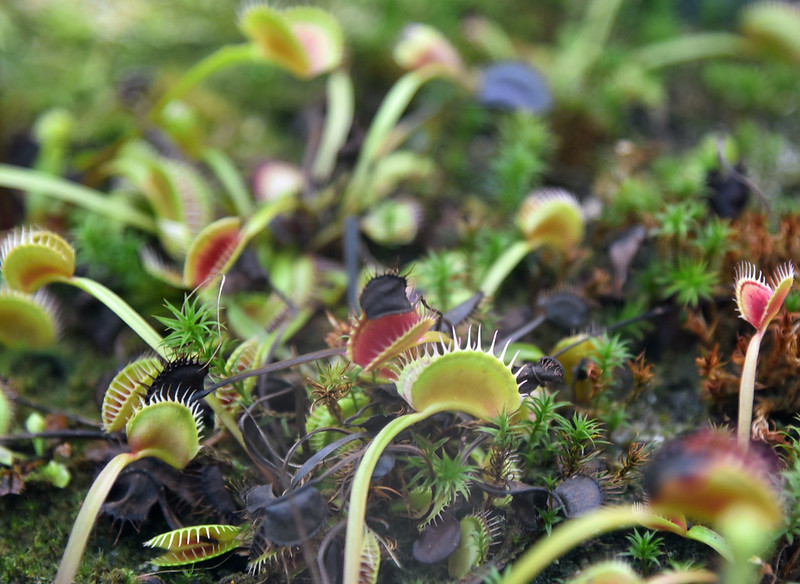
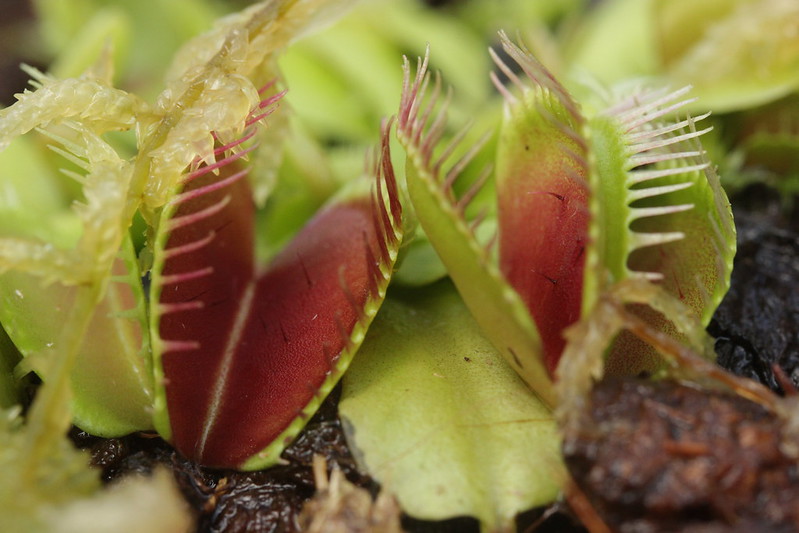
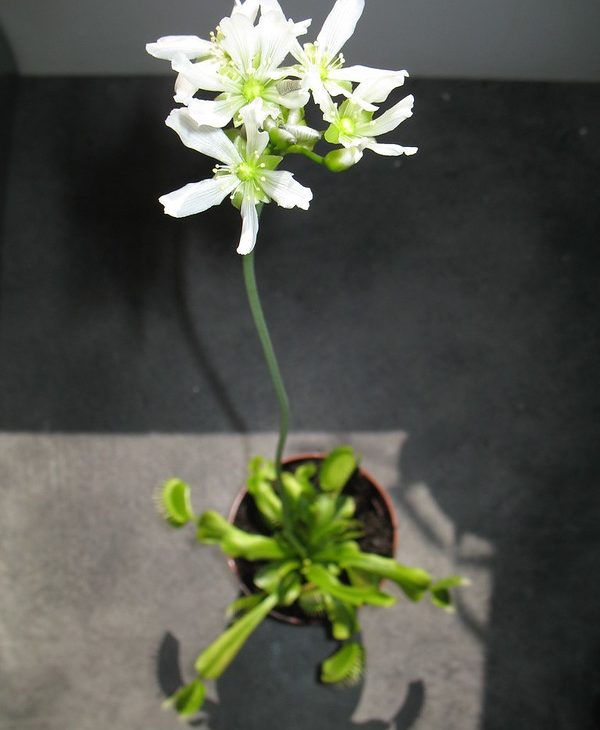
Genus Drosera
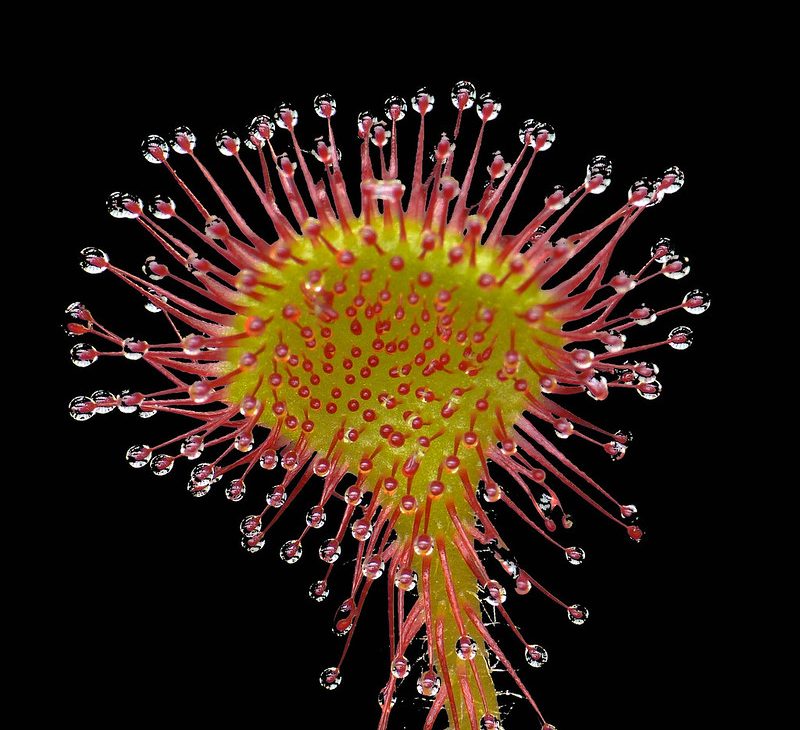
Drosera is a bit different from the other genera here since it can be found in lots of different locations.
Where other species are in danger of having their natural habitats wiped out, Drosera should be pretty safe.
Sundews (as they’re commonly called), have been known to botanists for a long time, but it was only in the 18th century that their carnivory was discovered.
They’re also some of the most numerous in terms of species; there are currently 171 species of Drosera known to science.
Some are annuals, while others are perennials.
Some are small, while others are large.
Some like the cold, while others revel in the heat.
There are too many differences to cover in this guide, so if you’re interested in learning more about some of the species, check the resources section at the bottom of this guide.
Where they can be Found
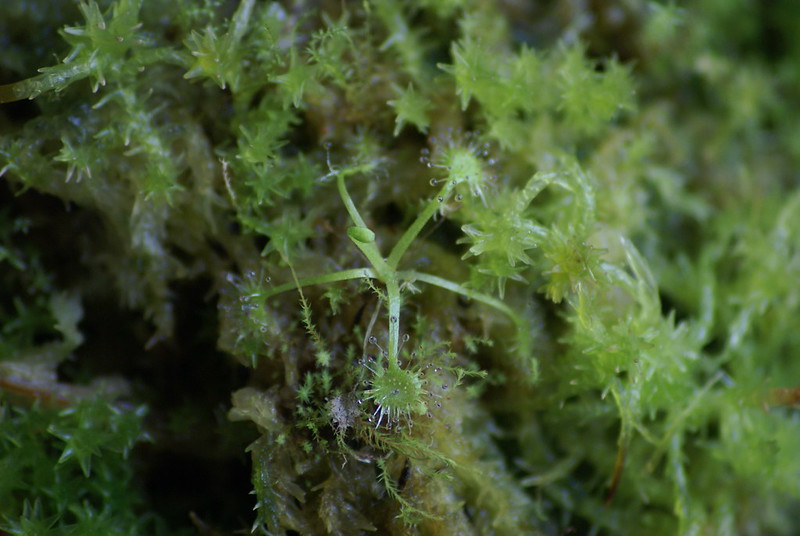
This genus is one of the most prolific of carnivorous plants, so you can find them just about all over the place.
Particular species have evolved to prefer a specific environment, however.
Plant Mechanics
Drosera are flypaper plants. They attract prey by advertising lots of free nectar, but once the prey land on the trap to have a drink, they find that they’re stuck.
Mucus on the plant eventually covers the insect and causes them to suffocate, after which they are digested.
Cultivation Guidelines
Because there are so many species, it’s impossible to provide you with cultivation guidelines for all of them.
If you plan on growing Drosera species, it’s best that you check what species you have and figure out what works for that particular plant.
Pictures of Drosera
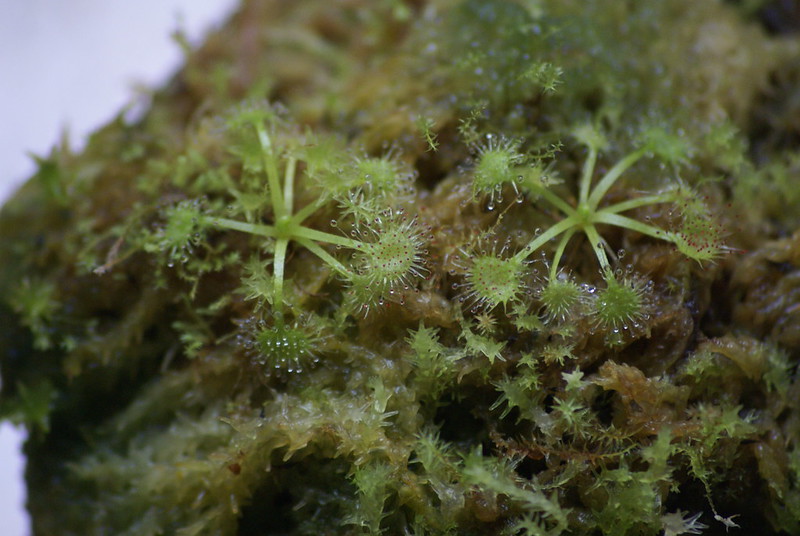
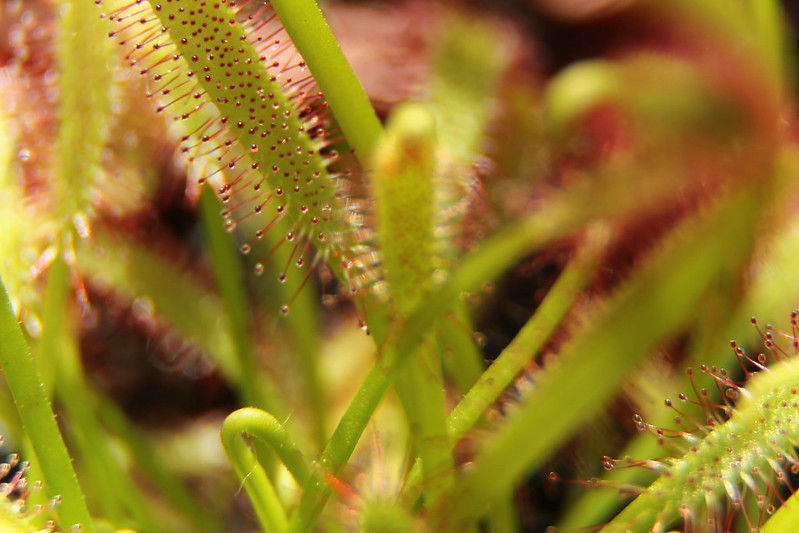
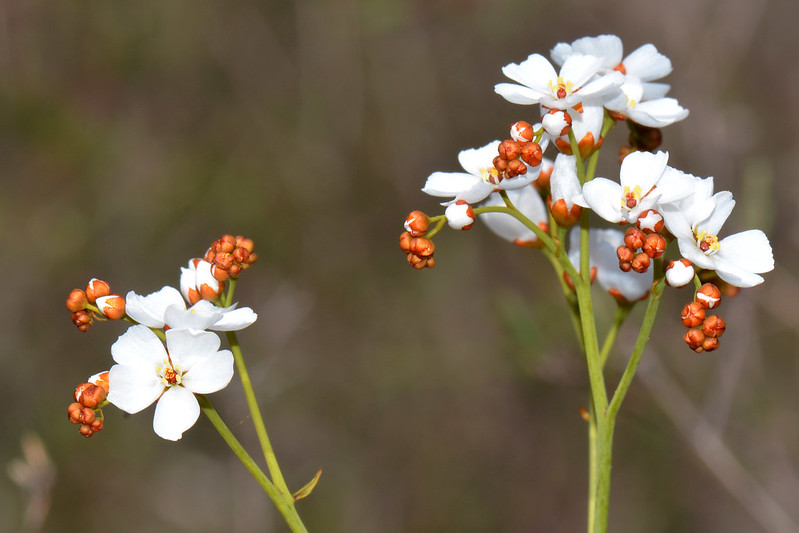
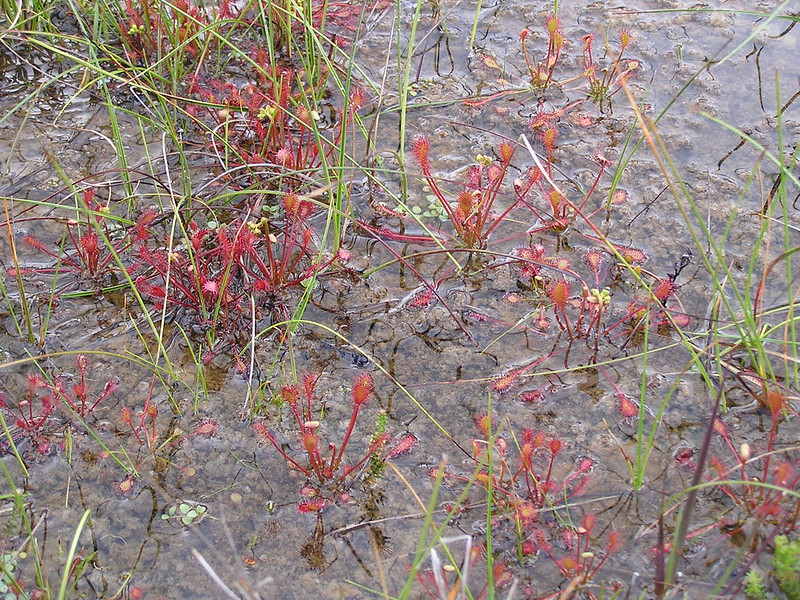
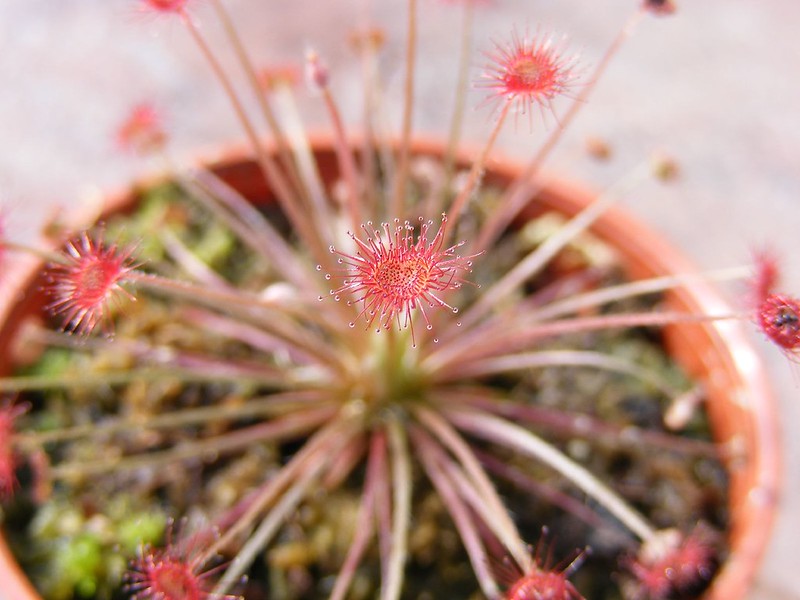
Genus Drosophyllum
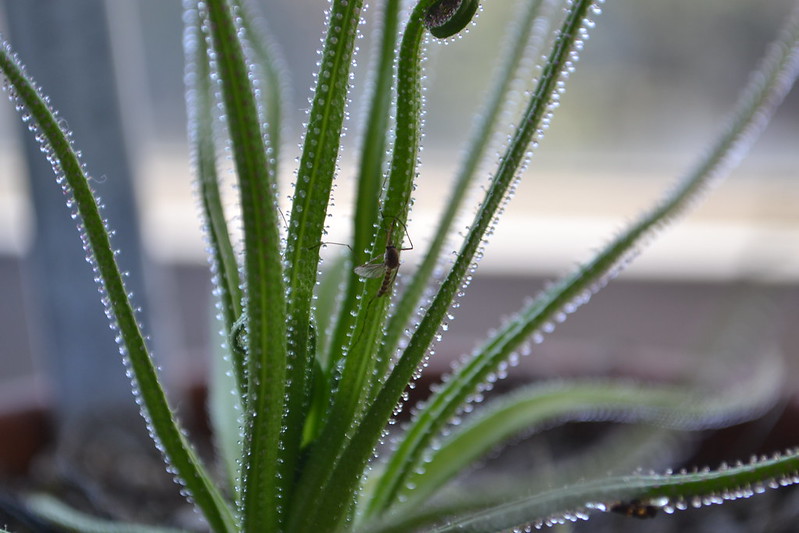
This genus has been long known to botanists, but it wasn’t until 1875 when Charles Darwin demonstrated once and for all that it was carnivorous.
They’re also one of the larger types of carnivorous plants, with heights of half a metre quite usual.
Where they can be Found
Their native environment is Portugal and they can also be found elsewhere around the Mediterranean, so they don’t really do well in humid environments.
Plant Mechanics
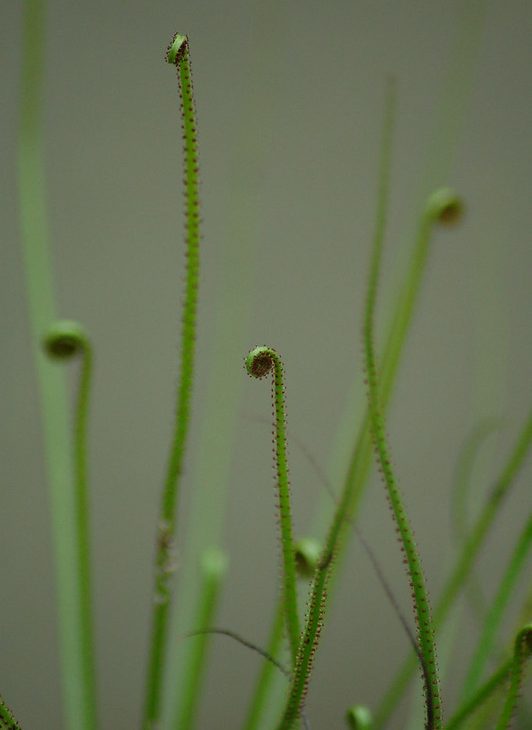
This genus is covered in mucus-secreting glands that trick prey into thinking that they’re actually nectar.
Unlike flypaper traps, Drosophyllum works slightly differently; instead of sticking the insect to itself, this plant transfers all the mucus to the insect, eventually drowning it in the mucus after it has bounced around the plant.
Once the creature is dead, digestion begins.
Cultivation Guidelines
This plant requires hotter, dryer conditions that many other types of carnivorous plants. If you live in a humid or cold area, then you will probably have a tough time growing Drosophyllum.
Pictures
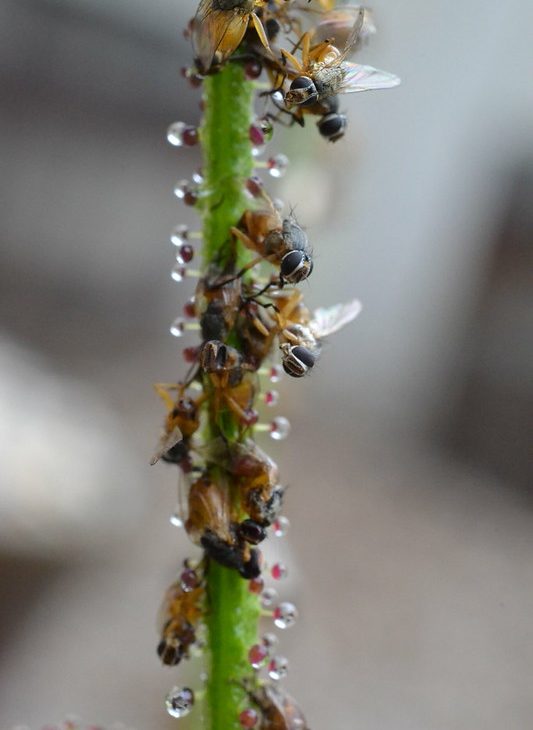
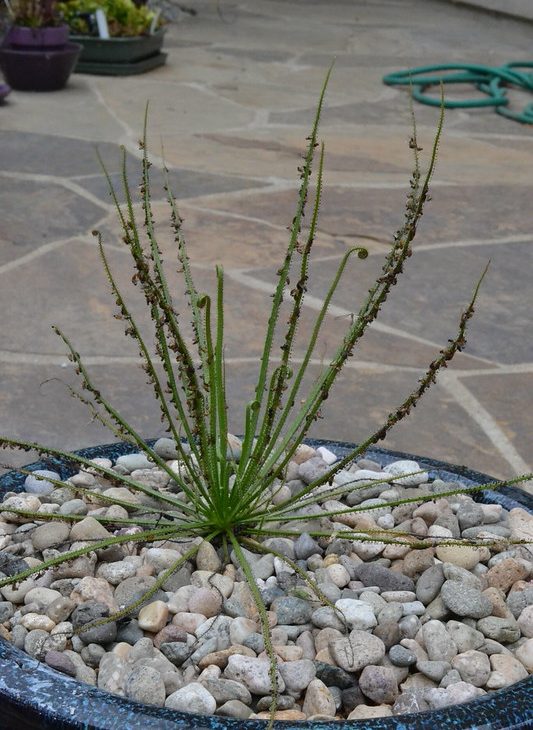
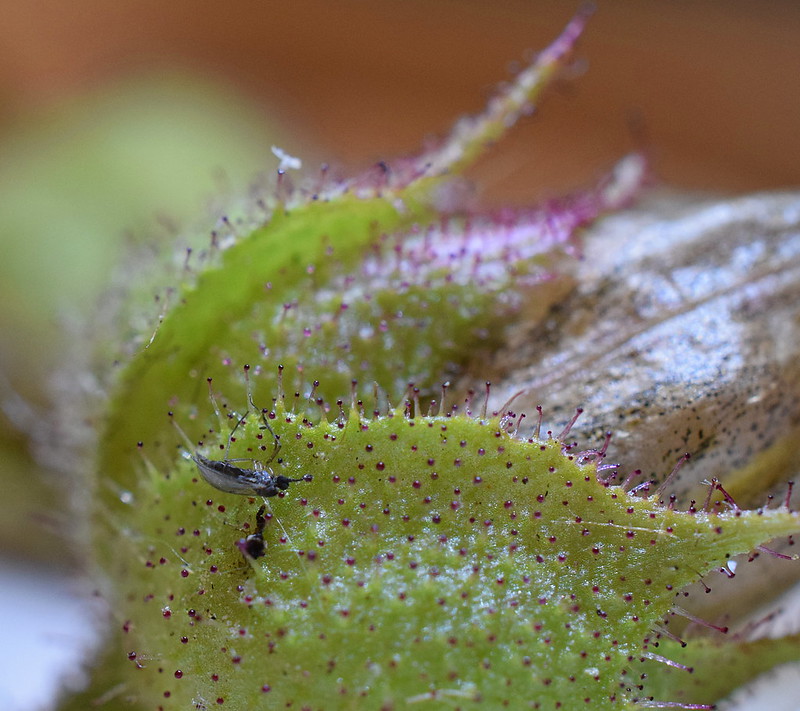
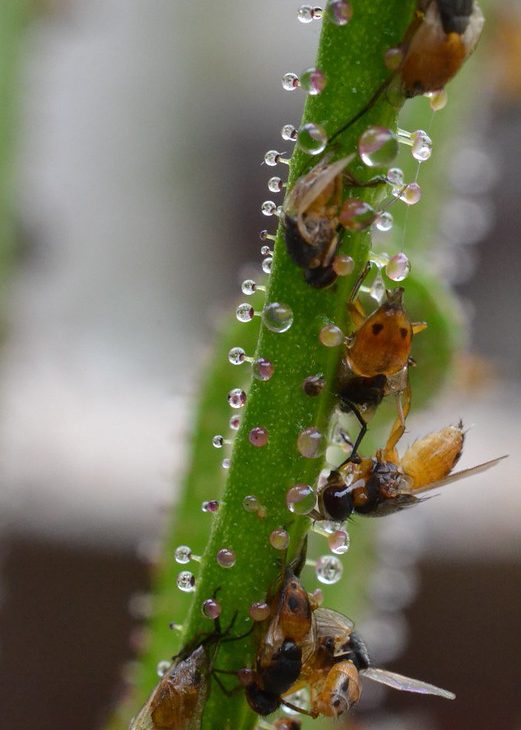
Genus Heliamphora

The first discovered species of Heliamphora was found in 1839 in South America. They are perennial plants that produce funnel-shaped leaves.
Where they can be Found
Heliamphora can be found on the great plateaus of Venezuela and Brazil. Unless you’re an intrepid explorer, you’re unlikely to come across these on your own.
Plant Mechanics
Of all the genera of carnivorous plants, these are considered to have the most basic traps.
They attract prey through bright colours and nectar secreting glands in the “nectar spoon”, hanging perilously over the top of the pitcher.
Sometimes insects will fall into the pitcher and have a hard time getting out because of all the downwards pointing hairs inside.
Eventually, the prey drowns inside the pitcher from all the secretions, which then go about the process of digestion.
Cultivation Guidelines
Because these plants are found living in high altitudes, it can be hard to mimic their natural environment of high light and low temperatures.
That said, there are a lot of species, so it might be easier to grow one rather than another depending on where you live.
Pictures
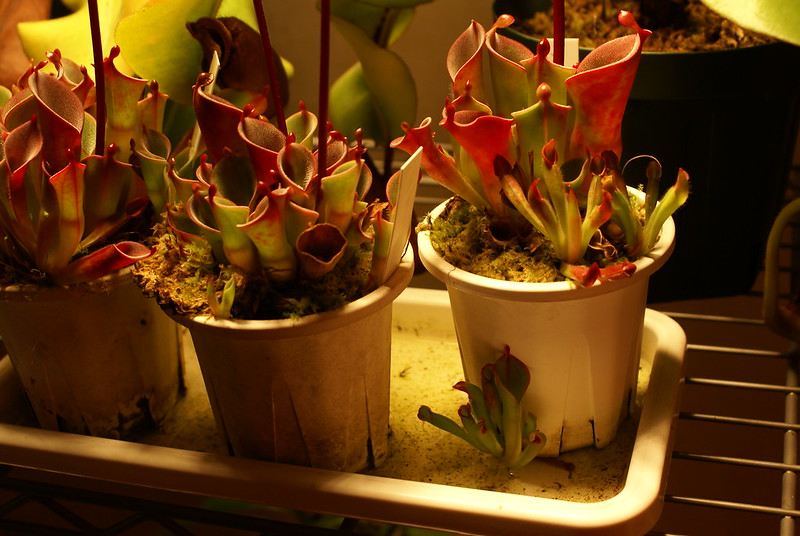
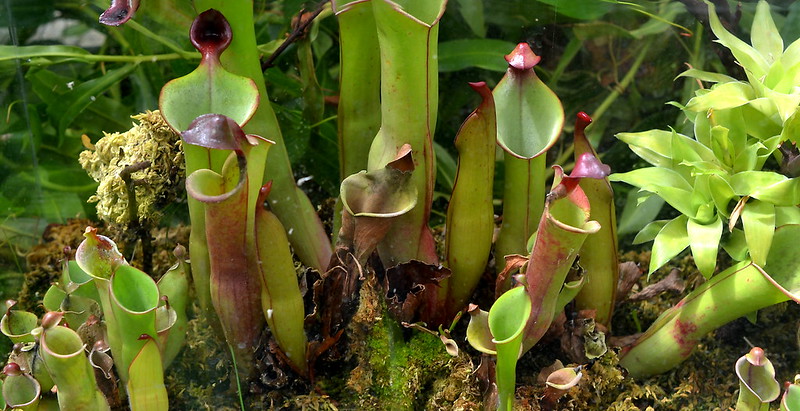
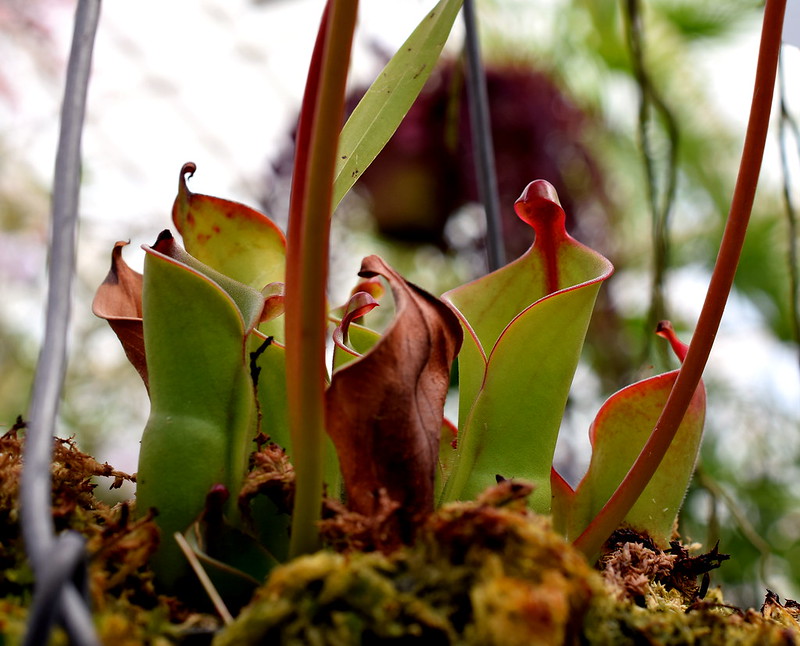
Genus Nepenthes
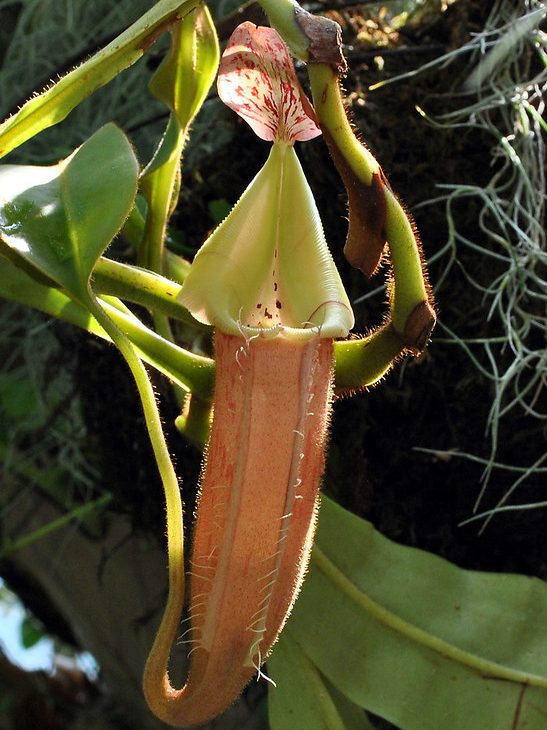
The genus Nepenthes, commonly known as the tropical pitcher plant, has been known to botanists for hundreds of years; Linnaeus named it in 1737 and it was known for about a hundred years before that.
It most respects it’s similar to most other pitcher plants, but Nepenthes often have close relationships with other animals.
One species allows ants to live inside it, while another provides so much food for termites that colonies can lose members to the plant and have it not really matter at all.
Where they can be Found
You’ll find most species on the island of Borneo, but some species can also be found in Indonesia, the Malay peninsula and the Philippines.
Plant Mechanics
As another pitfall trap plant, Nepenthes is very similar to other genera, such as Sarracenia and Cephalotus.
The trap consists of a lid and a pitcher. Prey are attracted into the pitcher by nectared secreted by the lip of the pitcher and once they fall into the trap they are consumed within hours.
Cultivation Guidelines
Nepenthes can be a tough genus to grow if you live in a temperate climate since they naturally grow in the tropics.
To grow them successfully, you’ll most likely need a greenhouse setup or a terrarium and how to setup either of those is well beyond the scope of this guide.
Pictures of Nepenthes
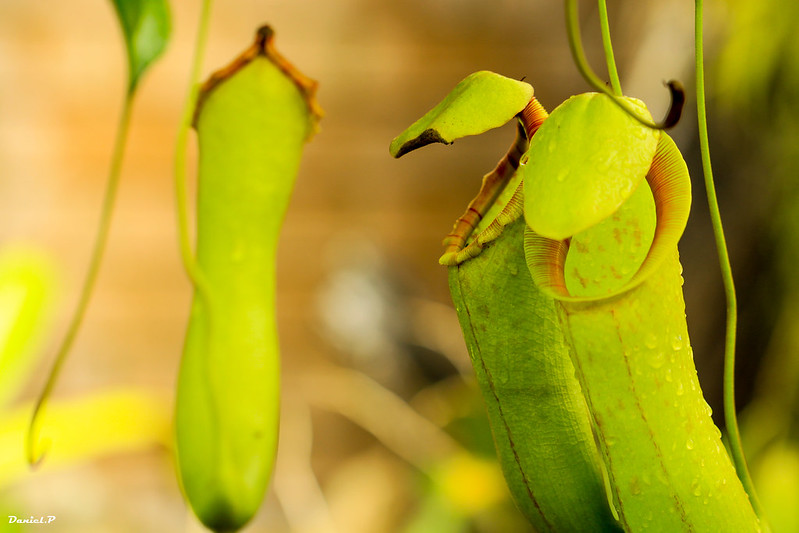
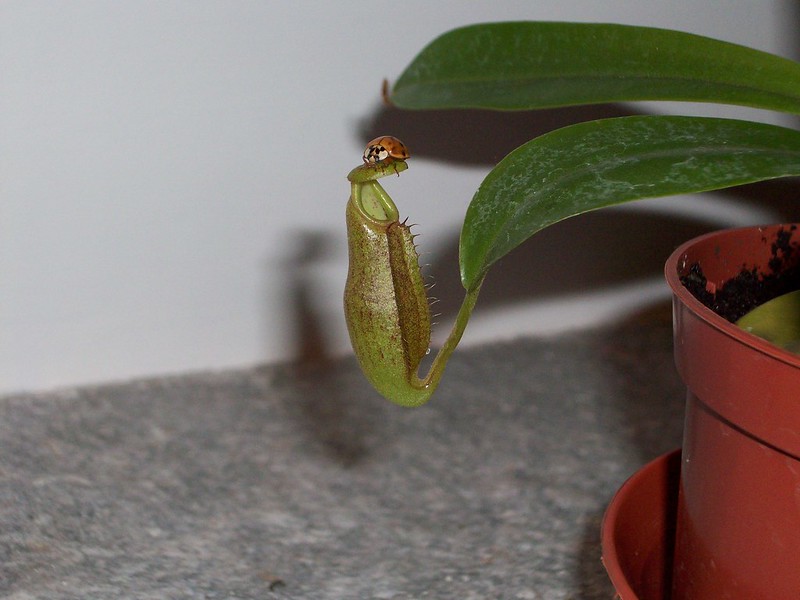
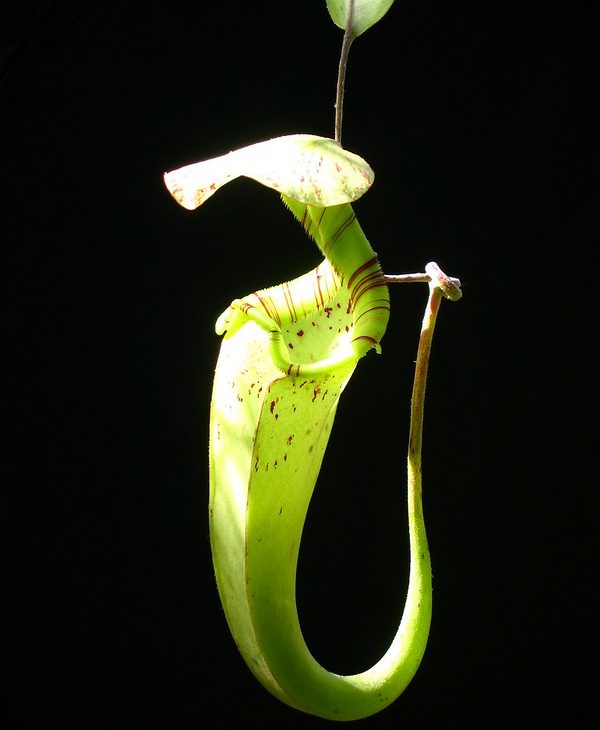
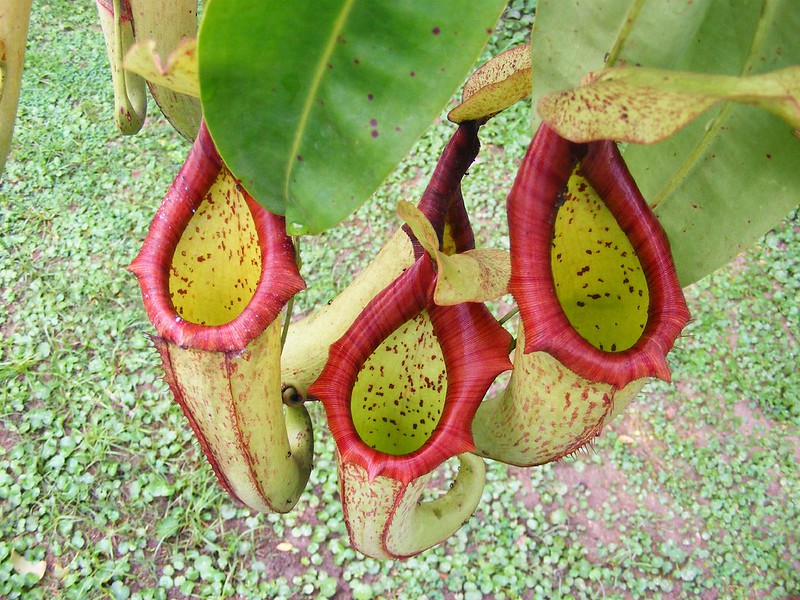
Genus Pinguicula
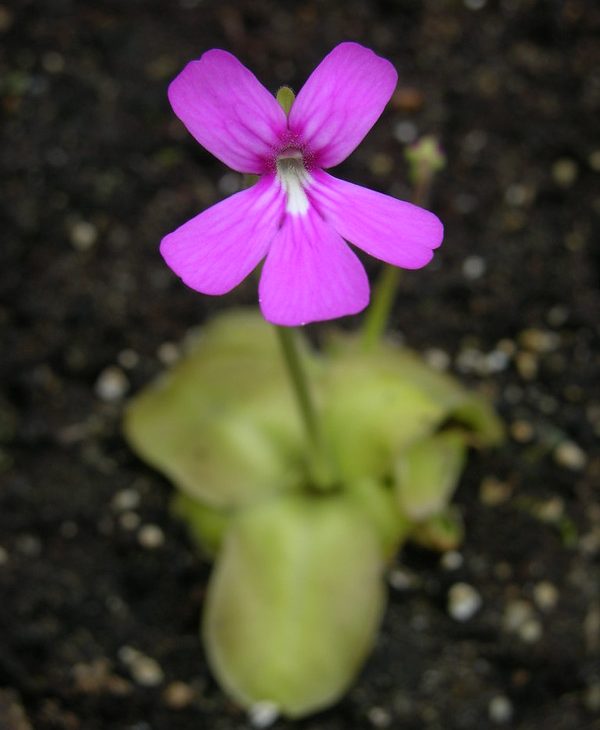
This genus, commonly known as Butterwort, consists of close to 100 species of flypaper trap plants.
While it has been known to botanists for a long time (The Sami people in Norway apparently used them to treat sore reindeer teats), it was again Charles Darwin who first realised that these plants are carnivorous.
Where they can be Found
This genus is quite well spread, with species found in temperate and arctic Europe, Mexico, the US and even parts of the Caribbean.
Plant Mechanics
This genus consists of flypaper traps similar to other genera such as Drosera.
Cultivation Guidelines
The difficulty of cultivating Pinguicula largely depends on the species you’re working with. Some make life easy, while others are really tricky.
To ensure that your plants grow well, check which species you’re dealing with and specifically how to grow them.
Pictures of Pinguicula
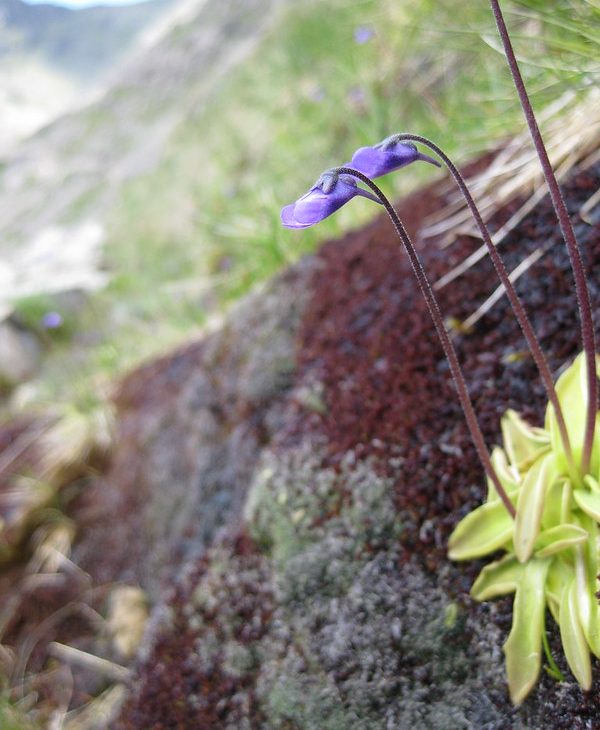
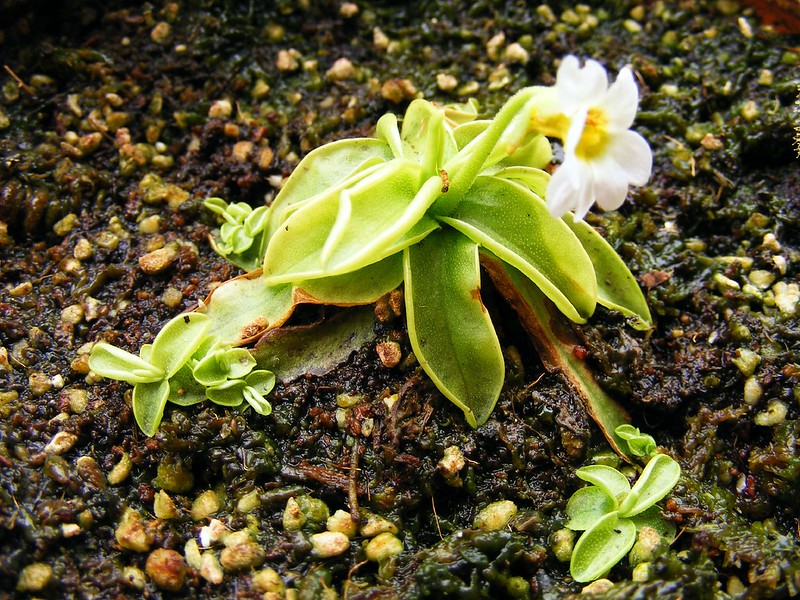
Genus Sarracenia
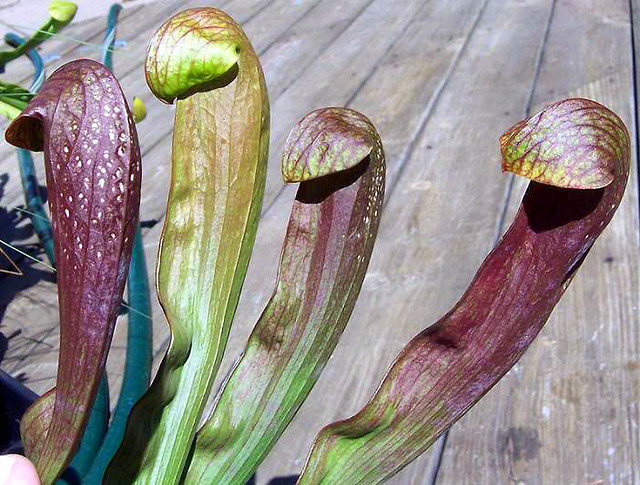
Sarracenia is another genus of pitcher plants and one that looks quite stunning to humans. Some even believed that their form resembles that of a human.
Whether or not you agree with that last statement, they are a popular plant in the world of carnivorous plants.
Where they can be Found
This genus can be found in the United States, from Texas all the way to Georgia and Virginia in the east.
Plant Mechanics
As with other sorts of pitcher trap plants, Sarracenia are passive plants that wait for prey to be attracted to it and then fall into the trap below, where they can’t escape.
Cultivation Guidelines
Fortunately, Sarracenia is one of the easier types of carnivorous plants to grow; especially if you live in a temperate climate.
As long as the temperature isn’t too extreme and your plants get plenty of sunlight then you’ll find it hard to go wrong.
Pictures of Sarracenia
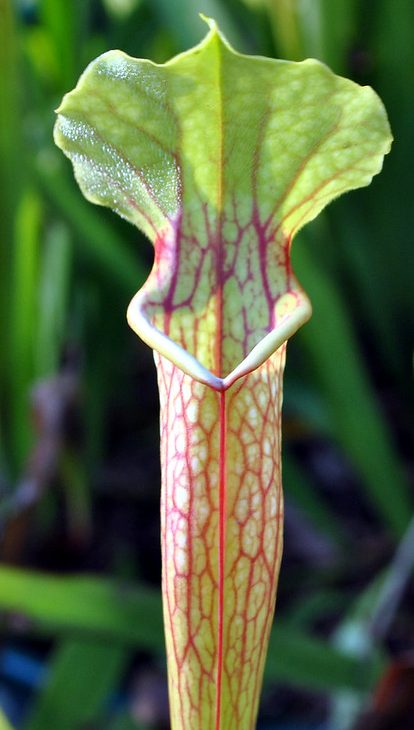
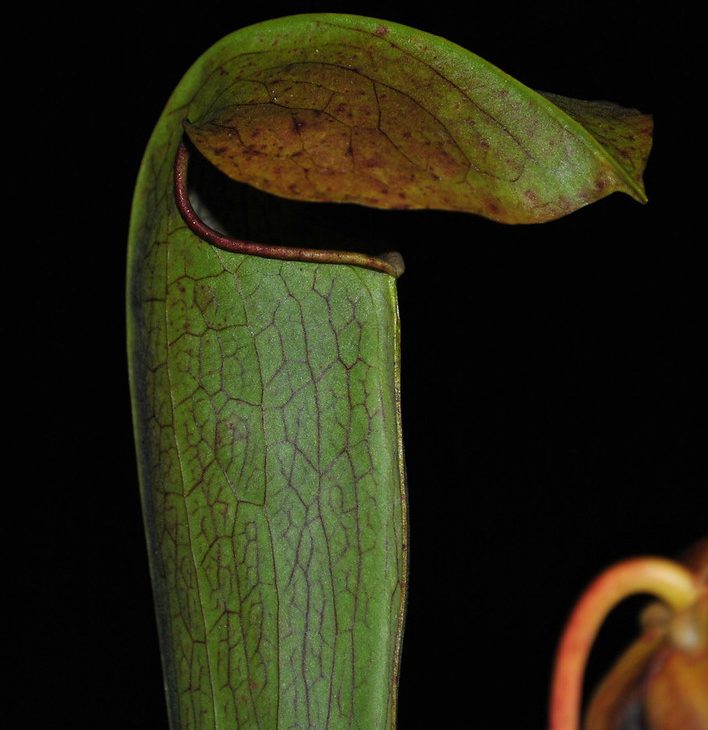

Genus Utricularia
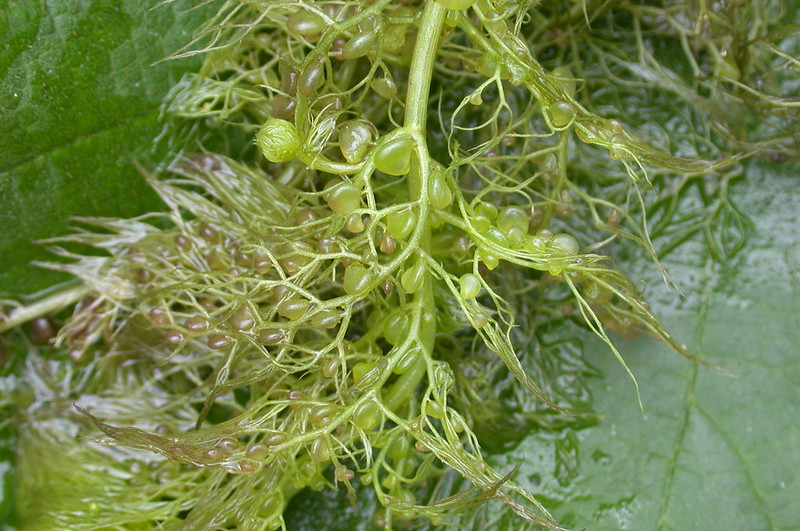
This genus, commonly known as Bladderwort, is one of the more obscure types of carnivorous plants because of its size, as well as the tiny mechanisms through which it captures and digests prey.
As with many other types of plants, it was known to Linnaeus in the 18th century but wasn’t until the 19th century that its carnivory was discovered.
The species in this genus also differ greatly from each other; some float around in the water, others live in the water but are fixed to the ground beneath, while others grow on rocky soil under a thin film of water.
Plant Mechanics
This genus uses suction traps (described above) to capture their prey and are perhaps the most interesting traps of all carnivorous plants.
Cultivation Guidelines
As with some other genera, the difficulty of cultivating Utricularia greatly differs depending on the species you’re dealing with.
To grow them well you’ll need to figure out what species you want to grow, then look into some specifics.
Pictures
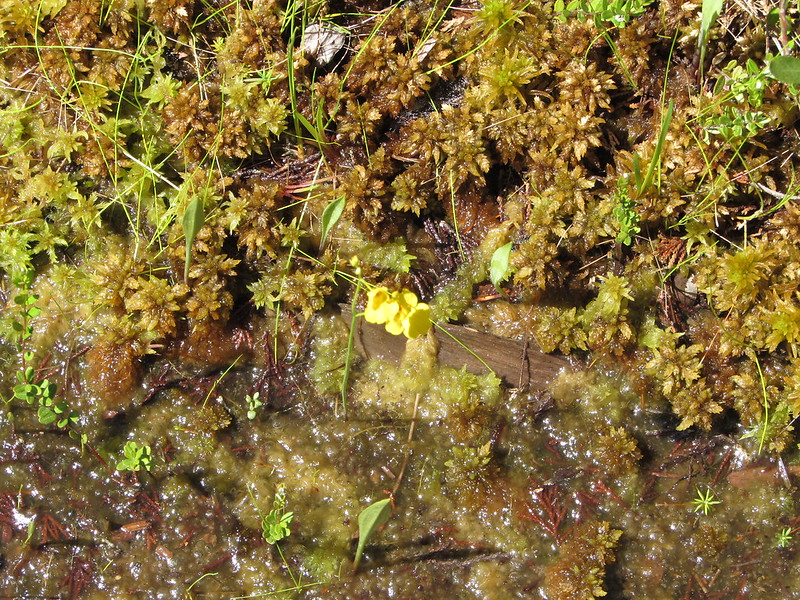
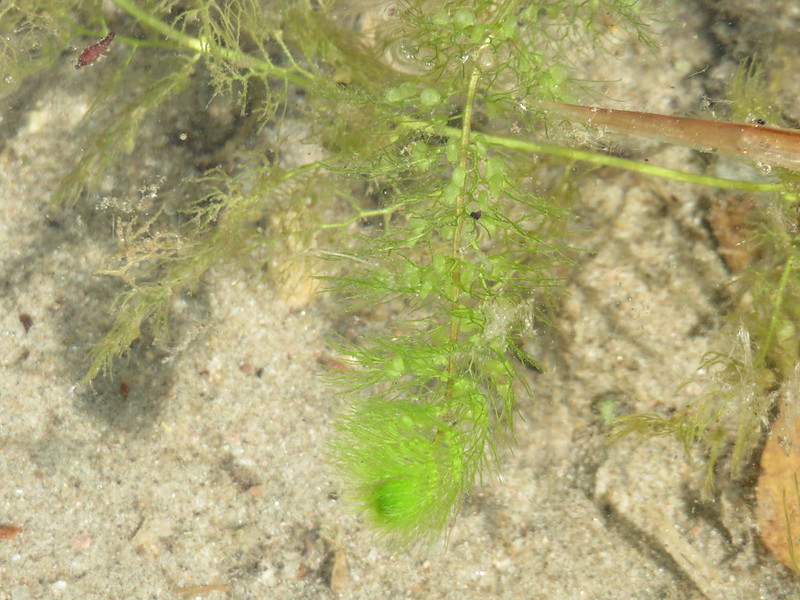
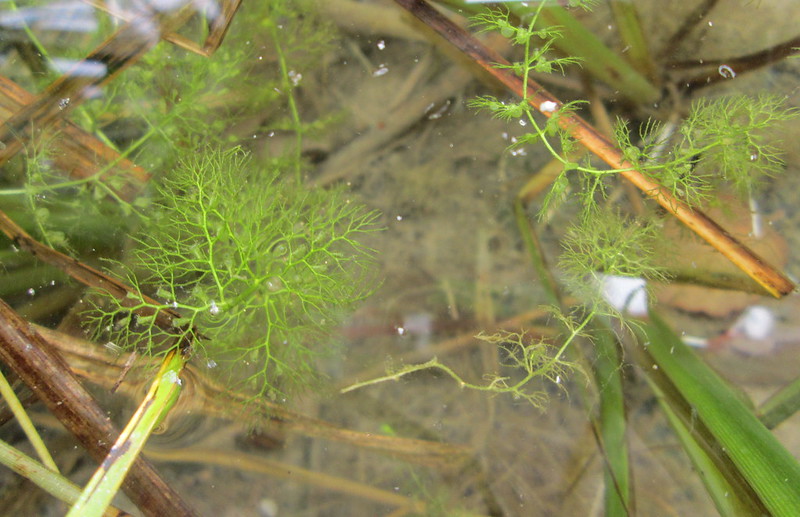
Chapter 5: Bonus Information
By this point, you should know just about everything you need to know if you want to cultivate your own carnivorous plants.
If that’s you then you’ll probably want to know a few more things such as how to get your hands on these plants.
If you’re an enthusiast you’ll also want to know where some of the best collections in the world are, so you can see great examples (even if you can only see pictures of them)
And if you’re really keen you’ll probably want to meet other people with a similar interest in carnivorous plants, so joining a club makes a lot of sense.
Below, you’ll find links to sites that solve all of the above questions.
Where to Buy Carnivorous Plants
Although carnivorous plants are increasing in popularity, they can still sometimes be hard to find.
So we’ve gathered up a few recommended suppliers for you that you can check out if you’re in Australia, the US or the UK (our three largest audiences)
Buy Carnivorous Plants in Australia
- Triffid Park: Mail order retailer located on the Mornington Peninsula
- Compass Carnivores: Adelaide based mail order retailer of carnivorous plants
- Primal Plants: Perth based mail order retailer
- Exotica Plants: Queensland based store specialising in Nepenthes and Heliamphora
- Strange World Carnivores: Goulbourn based retailer specialising in Sarracenia and Dionaea
- Newneps: Based in Lismore, NSW and specialising in Nepenthes
- Little Pot of Horrors: NSW based and sells a wide variety of carnivorous plants
- Captive Exotics: Based in NSW and specialising in Nepenthes
Buy Carnivorous Plants in the United States
- California Carnivores: Funnily enough based in California
- Carnivorous Plants USA: Specialising in Mexican Pinguicula
- Carnivorous Plants Nursery: Offer a wide range of carnivorous plants
- Sarracenia Northwest: Despite the name offer a wide range of carnivorous plants
- Predatory Plants: California based and offering a variety of plants
- Carnivore Culture: Another retailer with a wide range of offerings
- Curious Plant: Ohio based retailer of carnivorous plants
Buy Carnivorous Plants in the United Kingdom
- Hampshire Carnivorous Plants
- Triffid Nurseries: Stocks over 250 species of carnivorous plants
- Little Shop of Horrors
- Hewitt-Cooper Carnivorous Plants
- Wack’s Wicked Plants
- Tom’s Carnivores: Specialises in Nepenthes, but occasionally stocks Heliamphora
Great Collections of Carnivorous Plants
If you’re enamoured by carnivorous plants and would love to see some of the best collections in the world, then the following places are the ones you want to check out.
Even if they’re halfway around the world, looking at their websites and other photos of the places can give you a good feel for what types of plants are out there.
The Best Clubs & Societies to Join
Australia
United States
United Kingdom
Chapter 6: Frequently Asked Questions
Q: Can a plant eat a human?
A: No, plants cannot eat humans. While there are numerous folktales about man-eating plants, none actually exist and most carnivorous plants feed on small insects.
Q: Do venus flytraps have feelings?
A: No, venus flytraps do not have feelings. Feelings are something that animals have evolved and the same neural circuitry is not found in any plants (even venus flytraps).
Q: Should I let my venus flytrap flower?
A: Probably… no. Letting your plant flower takes energy from the plant so it won’t grow as fast. If you’re experienced at growing them, then you can let your plants flower, but if you’re inexperienced enough to be asking the question, then you’re better off cutting the flowers off.
Q: Why is my venus flytrap turning black?
A: The actual flytraps turn black after they die, so this is a normal process. Each individual trap might only live for a few months before it turns black and dies, so unless there are other signs on your plant, this is a normal process.
Q: What is the largest pitcher plant?
A: Nepenthes Rajah (also known as the Giant Montane Pitcher Plant), is the largest carnivorous plant known to man. Originally found in Borneo, Nepenthes Rajah is so large that it has been found to eat rodents.
Q: Do you have to feed carnivorous plants?
A: Yes, if you want to keep them in perfect health. While you don’t need to feed them often, feeding them a few times a year is generally enough to keep them well fed.
Q: Can carnivorous plants live without bugs?
A: Carnivorous plants can live without eating bugs and insects, but getting some protein from insects does help to keep them alive and well. Without bugs to eat they have to survive off the nutrients in the soil like the rest of the plant kingdom.
Q: How many carnivorous plants exist?
A: There are at least 1,000 species of carnivorous plants known to man and there could very well be more out there. That said, encroachment on the natural environments that many of these plants live in has caused some species to become endangered, so the number of species could be dwindling rather than increasing.
Q: How long does it take a venus flytrap to digest?
A: It depends on the prey captured, but typically a venus flytrap will take between 5-10 days to digest its prey, after which it opens up again and gets rid of the parts of the animal that it was unable to digest.
Q: Do venus flytraps have brains?
A: No, plants do not have brains and while venus flytraps may be unusual in the plant kingdom, they are not so far removed from their cousins that they have gone on to evolve brains.
Q: What happens if a venus flytrap closes on nothing?
A: Well, nothing exciting, but a venus flytrap can only close so many times before it dies off, so if it closes on nothing (because you’re teasing it with a stick or your finger, for example), you are making it one close closer to dying.
Q: Can you overfeed a venus flytrap?
A: Yes, you can overfeed your venus flytrap, in the same way that you can overfeed yourself or your pets. Because most of us are used to eating frequently, we can worry that we’re not feeding out carnivorous plants often enough, but generally plants like these can go for months without eating something small.
Q: Can carnivorous plants survive indoors?
A: Yes, although they can be a little trickier to keep alive than you may think. If there aren’t too many insects in your home (and hopefully there aren’t), then you can get by feeding your plants an insect once a week or once a month.
Final Thoughts
There you have it, the definitive guide to carnivorous plants. Hopefully, you’ve learned all that you wanted about these interesting species of plants and are now ready to start cultivating them yourself.
If there’s something else you’d like to know about carnivorous plants that you didn’t find in here, please let us know in the comments and we’ll add it when we update the guide.
Also, if you’re a carnivorous plant fan and you think we left out something important, also go ahead and leave a comment and we’ll address it as soon as possible.
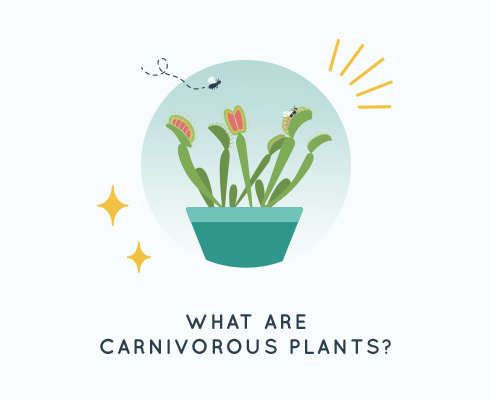
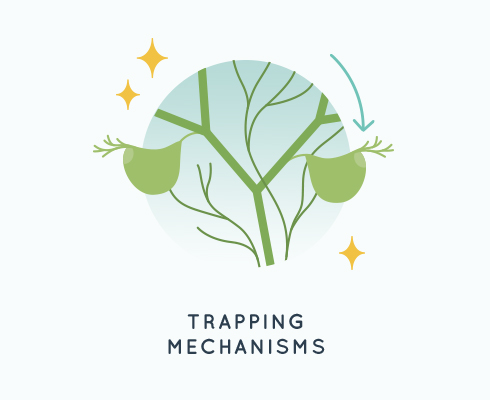
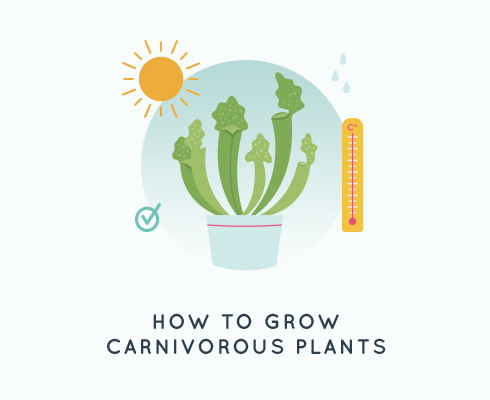
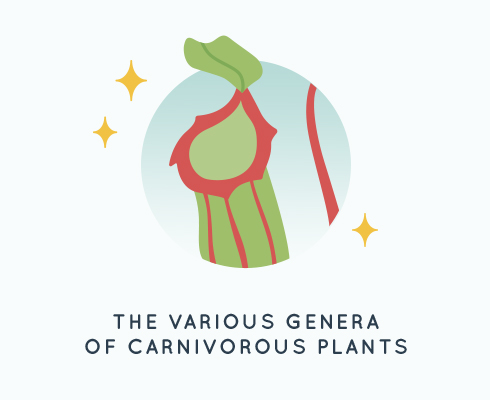


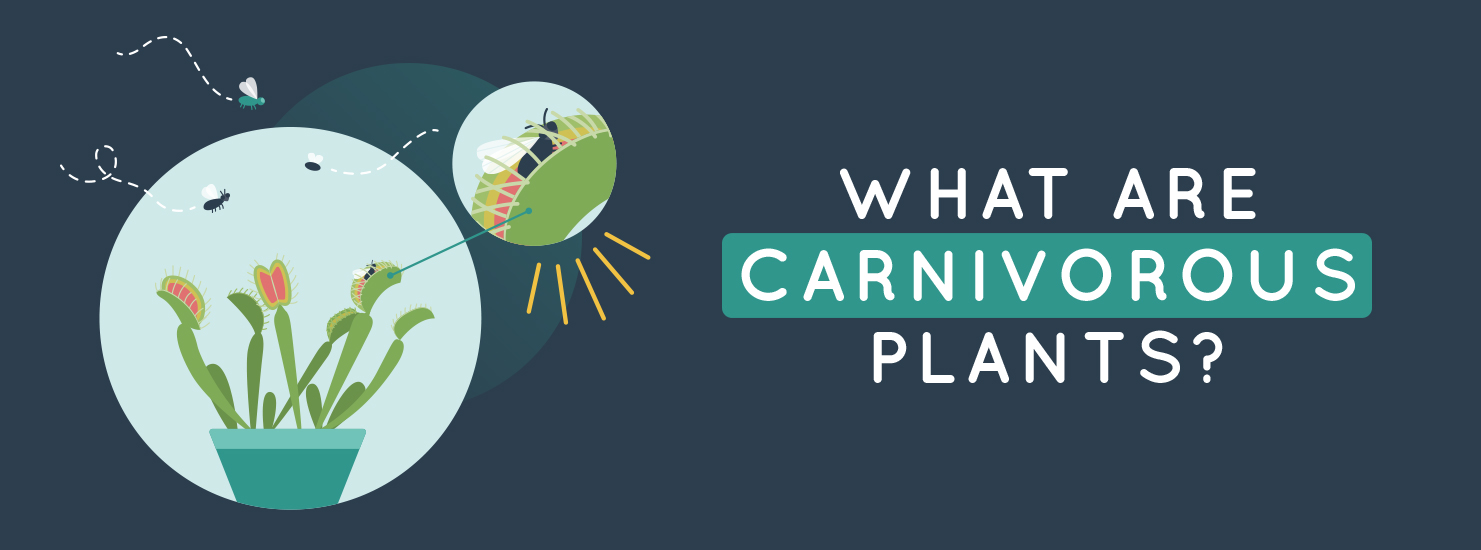

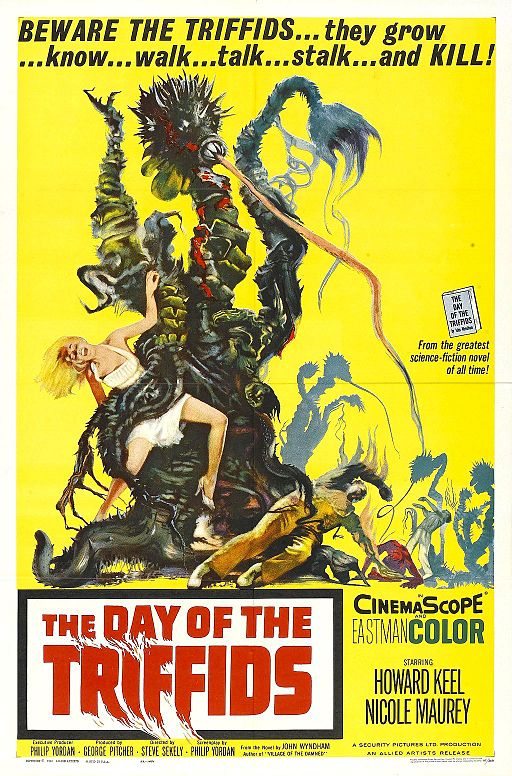



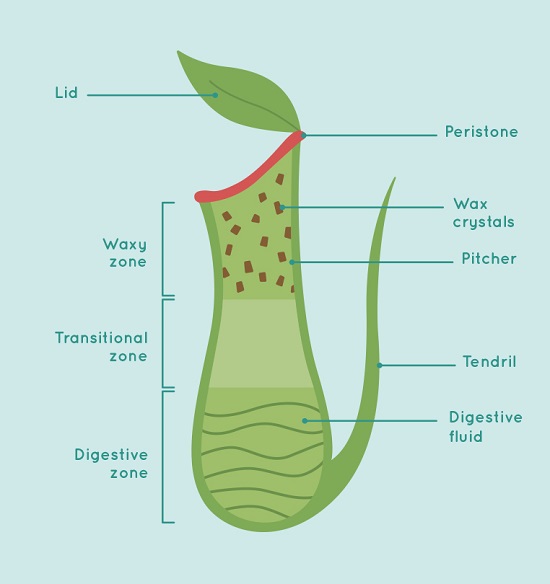
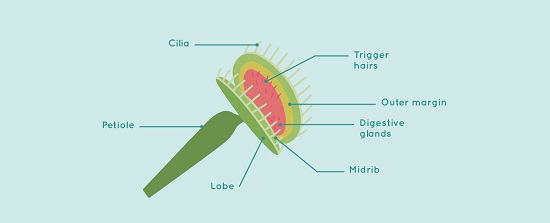



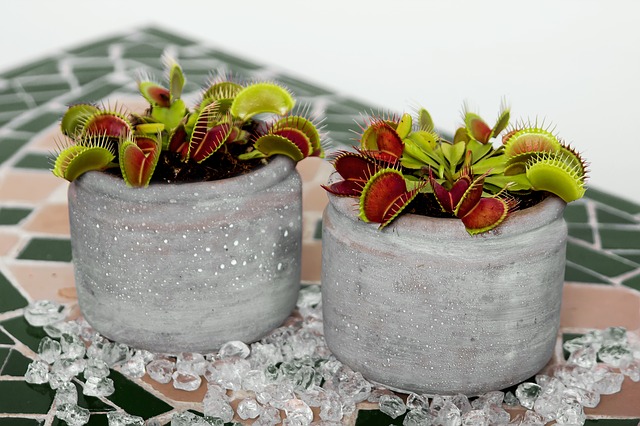
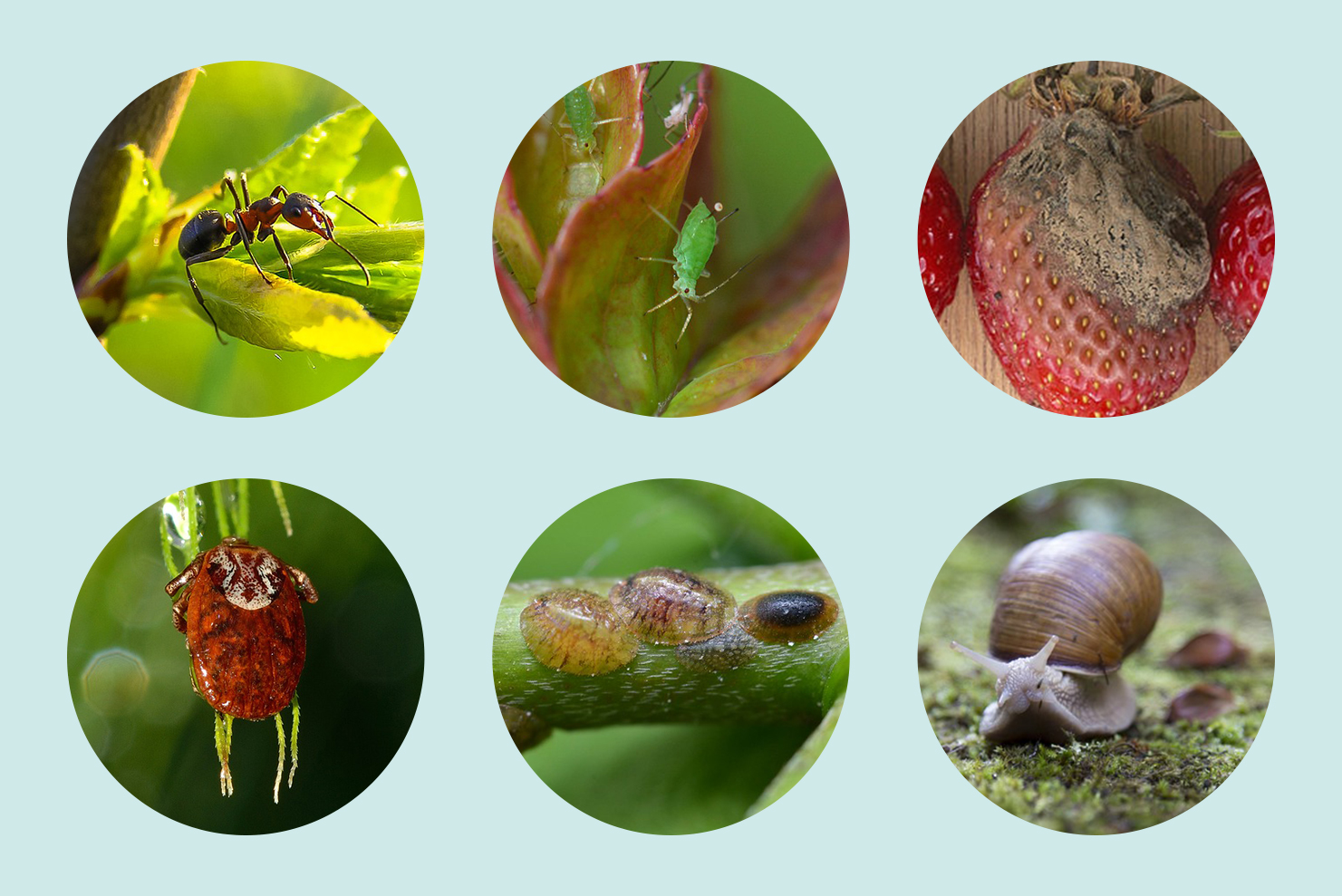

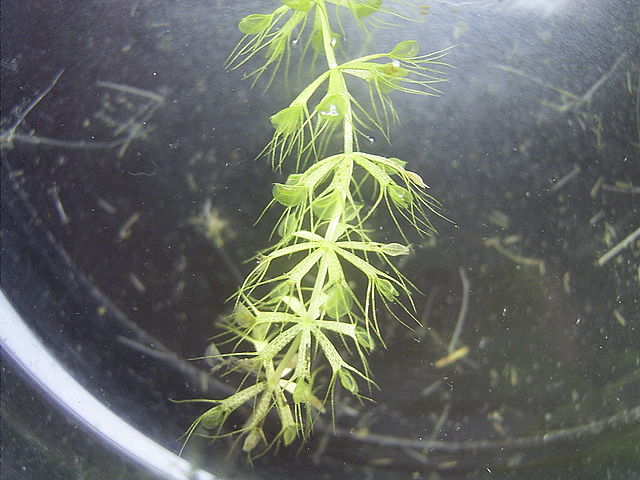



Comments are closed.